Discover Edinburgh, a city of dramatic hills and historic tales. Explore a majestic castle, wander medieval streets, and immerse y...
Tokyo Travel Guide 2025
| Updatedby Yuliya Karotkaya · 27 mins read
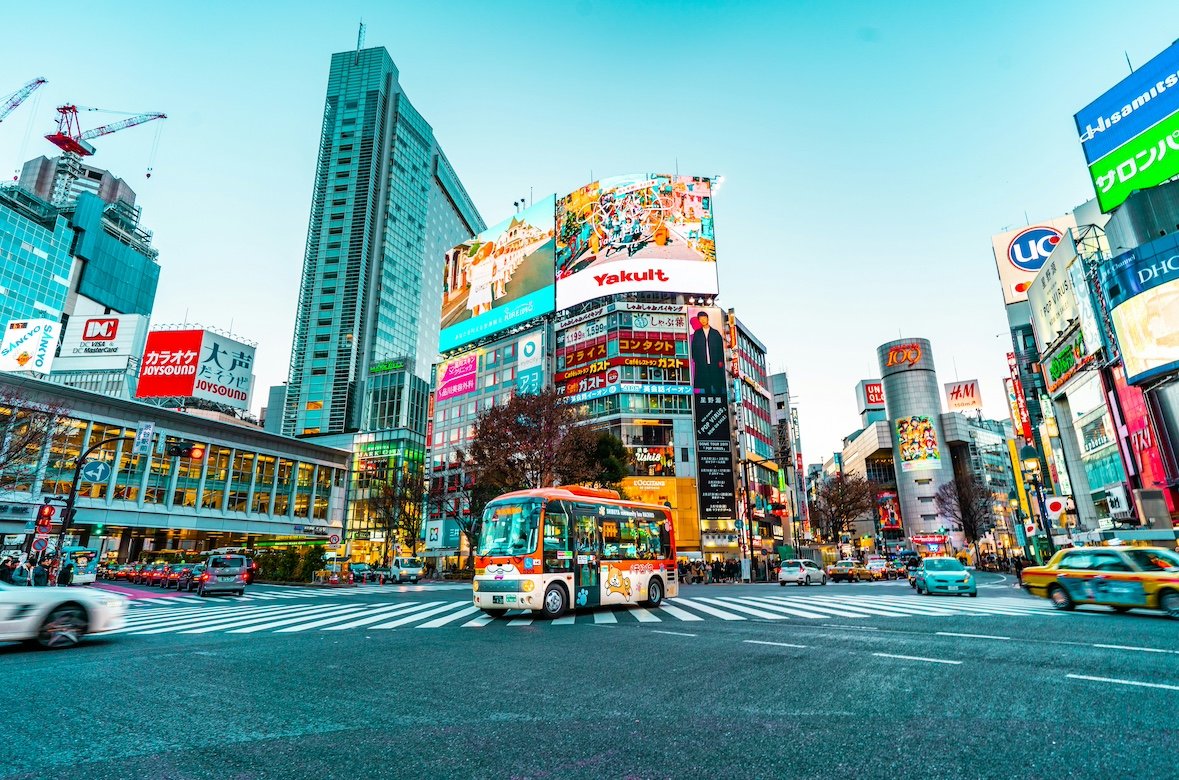
Discover Tokyo’s thrilling contrasts and unique charm with our comprehensive guide. Explore iconic landmarks, vibrant culture, and diverse culinary delights. This guide offers an insider’s look into one of the world’s most dynamic cities.
Prepare to immerse yourself in a city where ancient traditions seamlessly blend with dazzling futuristic innovations. Tokyo is more than just a metropolis; it’s a vast, ever-evolving universe that captivates with its dynamic energy and striking contrasts.
From serene gardens and majestic temples to blinding neon lights and towering skyscrapers, there’s something here for every traveler. Get ready for an unforgettable journey through one of the world’s most exhilarating cities.
Must See
Tokyo is an immense and incredibly diverse city, making the selection of its most iconic sights a delightful challenge. This section will help you navigate through the essential landmarks that capture the true essence of the city.
We’ll focus on places that are quintessential Tokyo experiences, offering unique insights into its culture, history, and modern pulse, while keeping museums for their dedicated section.
Shibuya Crossing & Hachiko Statue
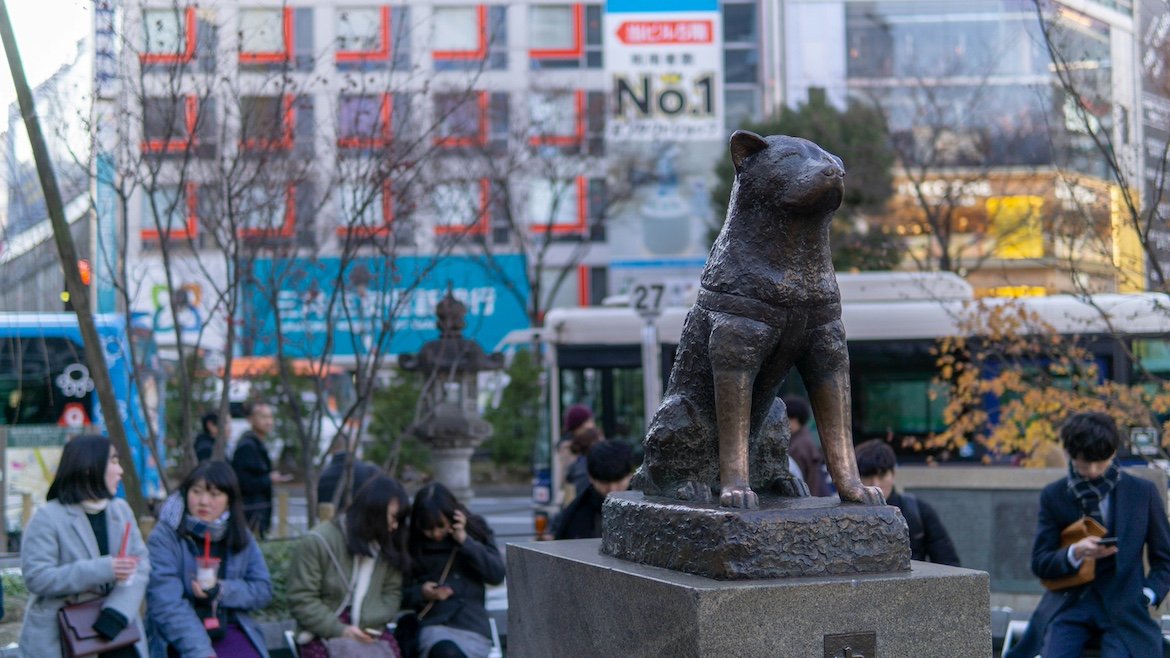
No visit to Tokyo is complete without experiencing the organized chaos of Shibuya Crossing, often called the busiest intersection in the world. Witness thousands of pedestrians crossing simultaneously from all directions, creating an mesmerizing urban ballet.
After soaking in the spectacle, find the famous Hachiko Statue just outside Shibuya Station’s Hachiko Exit. This bronze tribute commemorates the loyal Akita dog who waited for his deceased owner at the station every day for nearly a decade, becoming a powerful symbol of loyalty and devotion in Japanese culture. It’s a popular meeting point and a poignant reminder of an enduring bond.
Harajuku (Takeshita Street & Cat Street)
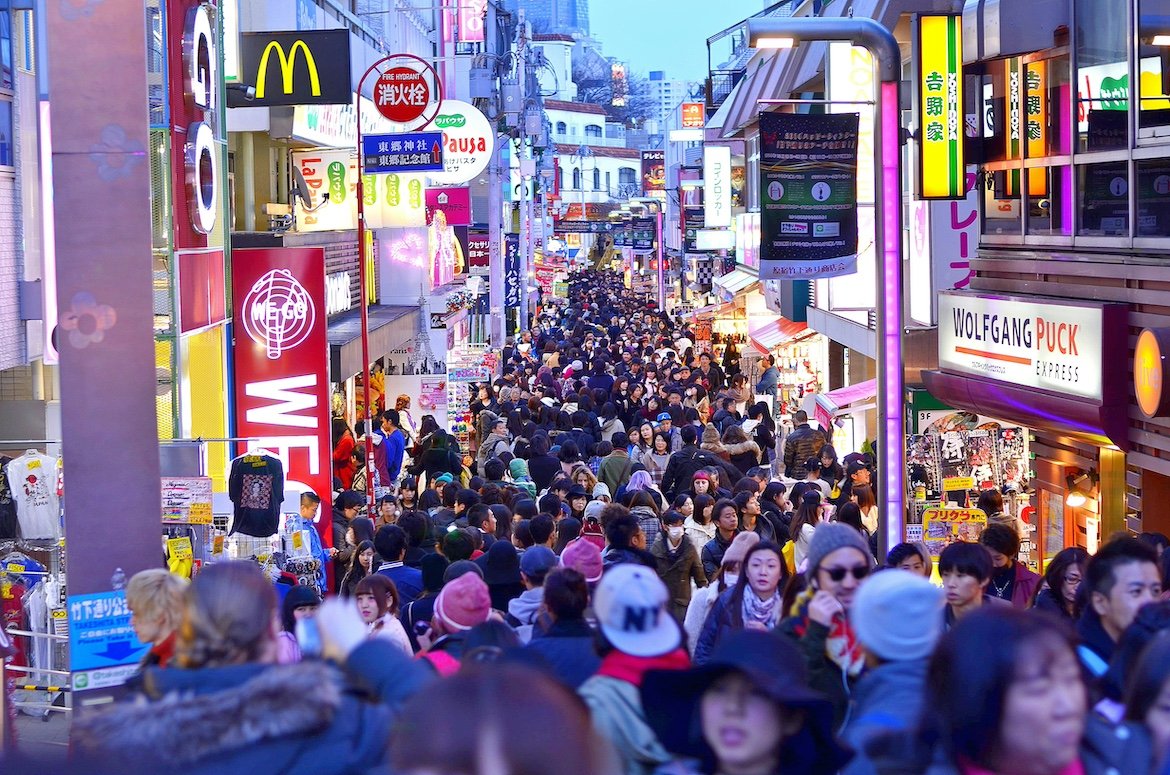
Step into the vibrant world of Harajuku, Tokyo’s epicenter of youth fashion and pop culture. Takeshita Street is its pulsating heart, a narrow, bustling lane overflowing with quirky boutiques, trendy cafes, and outrageous fashion statements, perfect for people-watching and grabbing a crepe.
Just a short walk away, the more relaxed Cat Street offers a different vibe, with upscale streetwear shops and vintage finds, popular among more discerning fashionistas. Harajuku is an exciting kaleidoscope of styles, from gothic lolitas to vibrant street art, offering a unique glimpse into Japan’s cutting-edge youth trends.
Meiji Jingu Shrine
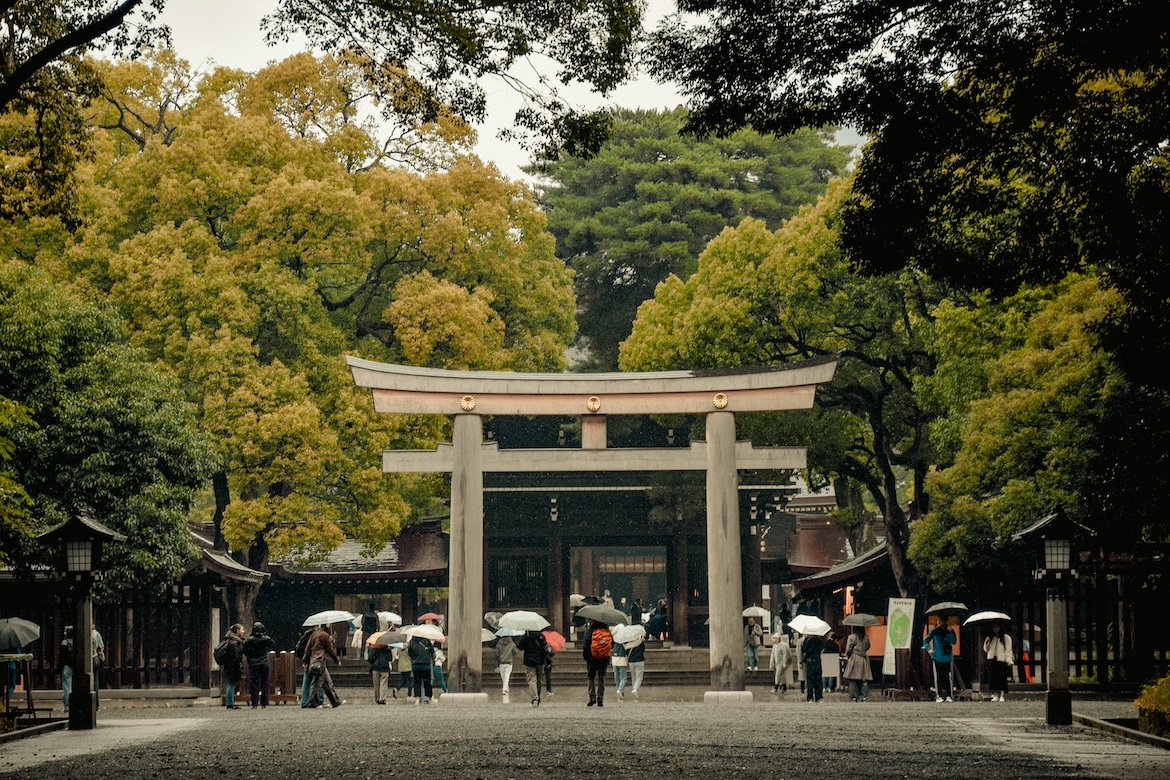
Nestled beside the lively Harajuku district, the serene Meiji Jingu Shrine offers a tranquil escape into nature and spirituality. Dedicated to Emperor Meiji and Empress Shoken, this Shinto shrine is surrounded by a sprawling forest of over 100,000 trees, donated from all over Japan.
Walk along the peaceful gravel paths, pass under the towering torii gates, and discover the elegant main shrine complex. It’s a place for quiet contemplation, often hosting traditional Shinto weddings, and provides a beautiful contrast to the city’s urban bustle.
Find tickets & info here.
Yoyogi Park
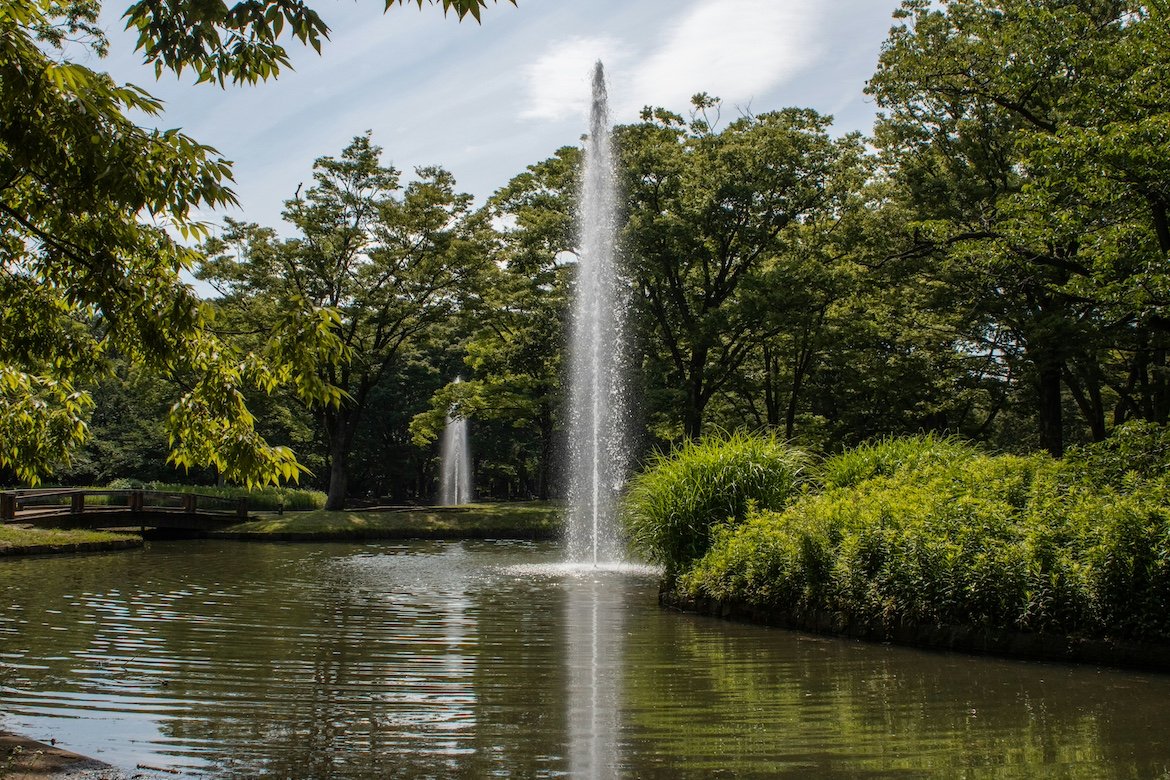
Adjacent to Meiji Jingu, Yoyogi Park is one of Tokyo’s largest and most beloved public parks. On weekends, it transforms into a lively hub where locals gather for picnics, sports, and performances.
You might spot anything from rockabilly dancers to martial arts practitioners, making it an excellent spot for people-watching. It’s a perfect place to relax, enjoy the green spaces, and observe the diverse daily life of Tokyoites.
Find info here.
Senso-ji Temple & Nakamise-dori Market (Asakusa)
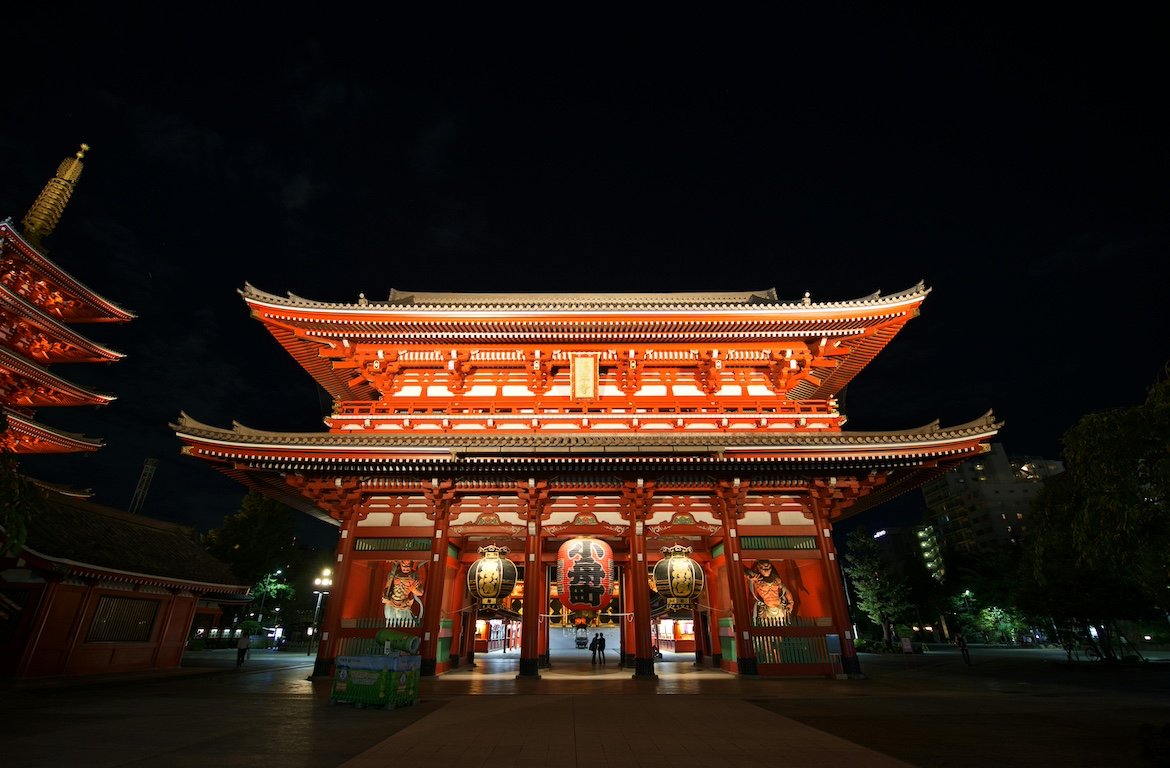
Journey back in time to the historic Asakusa district, home to Senso-ji Temple, Tokyo’s oldest and most significant temple. Begin your approach through the iconic Kaminarimon (Thunder Gate), guarded by massive lanterns.
Beyond lies Nakamise-dori, a bustling shopping street lined with stalls selling traditional snacks, souvenirs, and crafts, perfect for picking up unique gifts. The temple itself is a vibrant and active place of worship, where visitors can light incense, make offerings, and soak in the rich spiritual atmosphere. It’s a wonderful place to experience traditional Japanese culture.
Find info here.
Asakusa Traditional Area

Beyond the immediate vicinity of Senso-ji, the broader Asakusa Traditional Area invites further exploration. Wander through its charming backstreets, where you’ll find artisan shops, traditional restaurants, and rickshaw drivers offering guided tours.
The area maintains a nostalgic “shitamachi” (old downtown) vibe, providing a glimpse into Tokyo’s past. It’s a fantastic place to simply stroll, discover hidden gems, and feel the pulse of old Tokyo, contrasting sharply with the city’s modern districts.
Tokyo Skytree
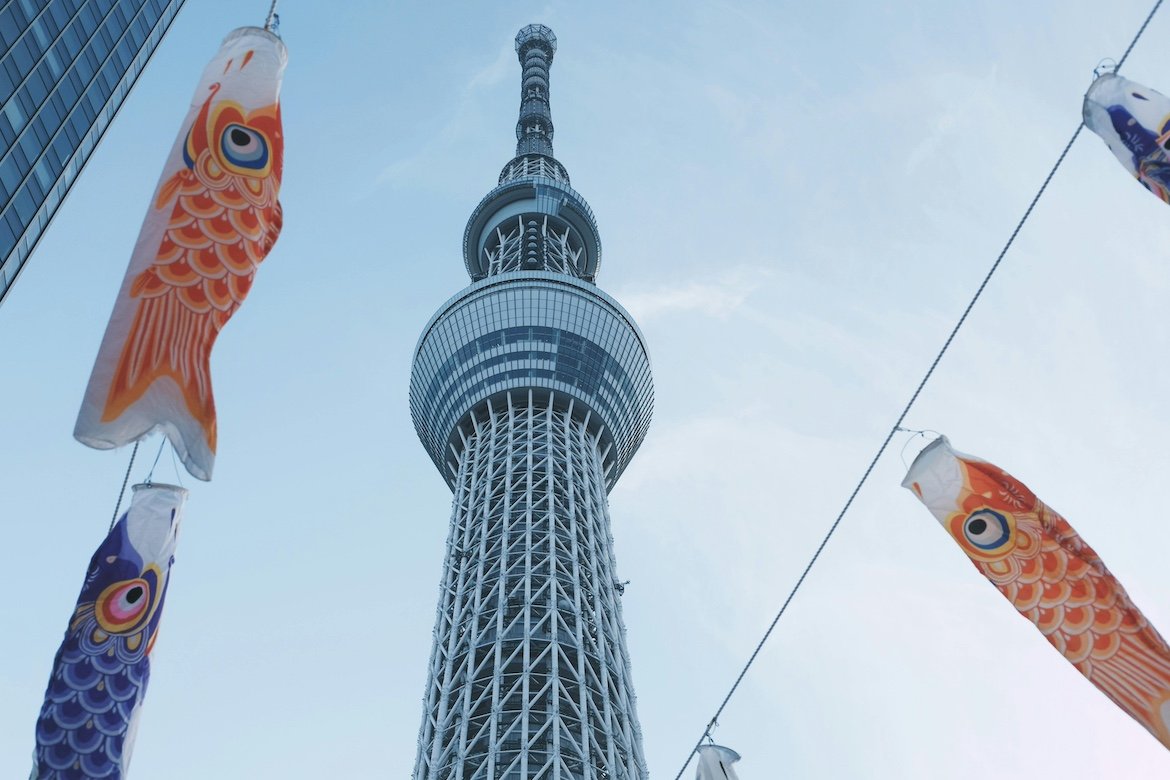
Soaring to a height of 634 meters, the Tokyo Skytree is an iconic symbol of modern Tokyo and offers breathtaking panoramic views across the sprawling metropolis. With two observation decks, the Tembo Deck (350m) and the Tembo Galleria (450m), you can witness the sheer scale of the city, from Mount Fuji on a clear day to the winding Sumida River below.
The structure itself is a marvel of engineering and combines traditional Japanese aesthetics with cutting-edge design. It’s an unforgettable experience for anyone wanting to grasp the vastness of Tokyo.
Find tickets & info here.
Imperial Palace East Garden
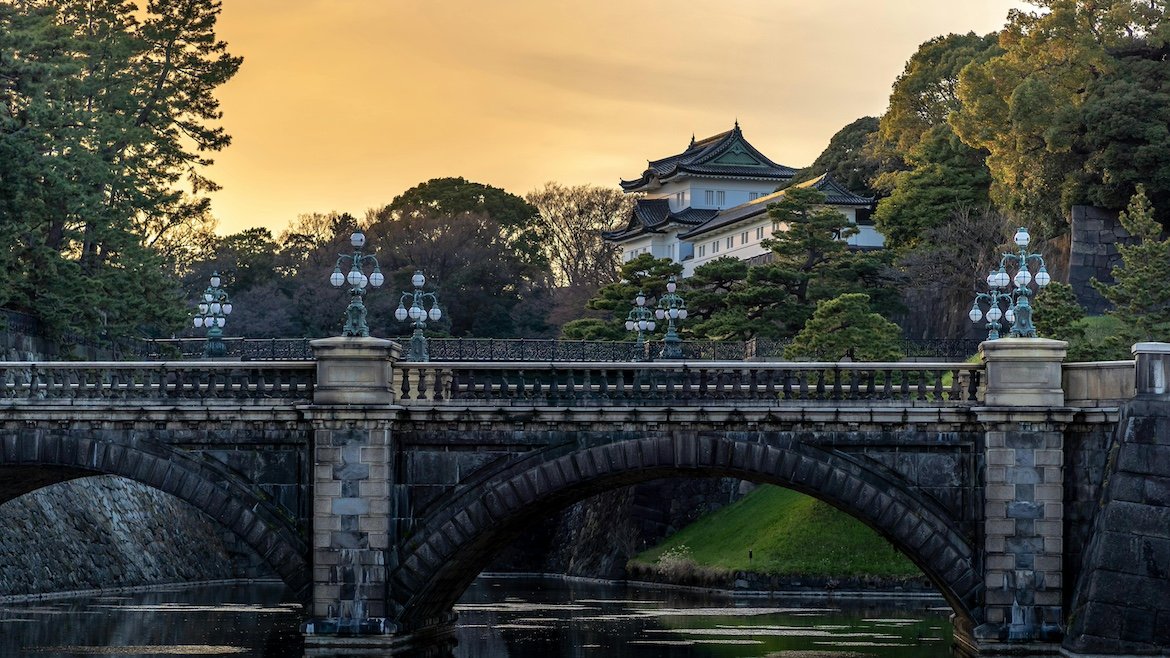
Step into a piece of Tokyo’s serene past at the Imperial Palace East Garden. This beautifully maintained garden is part of the former Edo Castle grounds, now home to the Japanese Imperial Family.
While the palace itself isn’t open to the public, these tranquil gardens offer a rare glimpse into the historical heart of the city, with remnants of the old castle moat, walls, and guardhouses. It’s a peaceful oasis perfect for a leisurely stroll, allowing you to reflect amidst historical significance and stunning natural beauty.
Find info here.
Tsukiji Outer Market
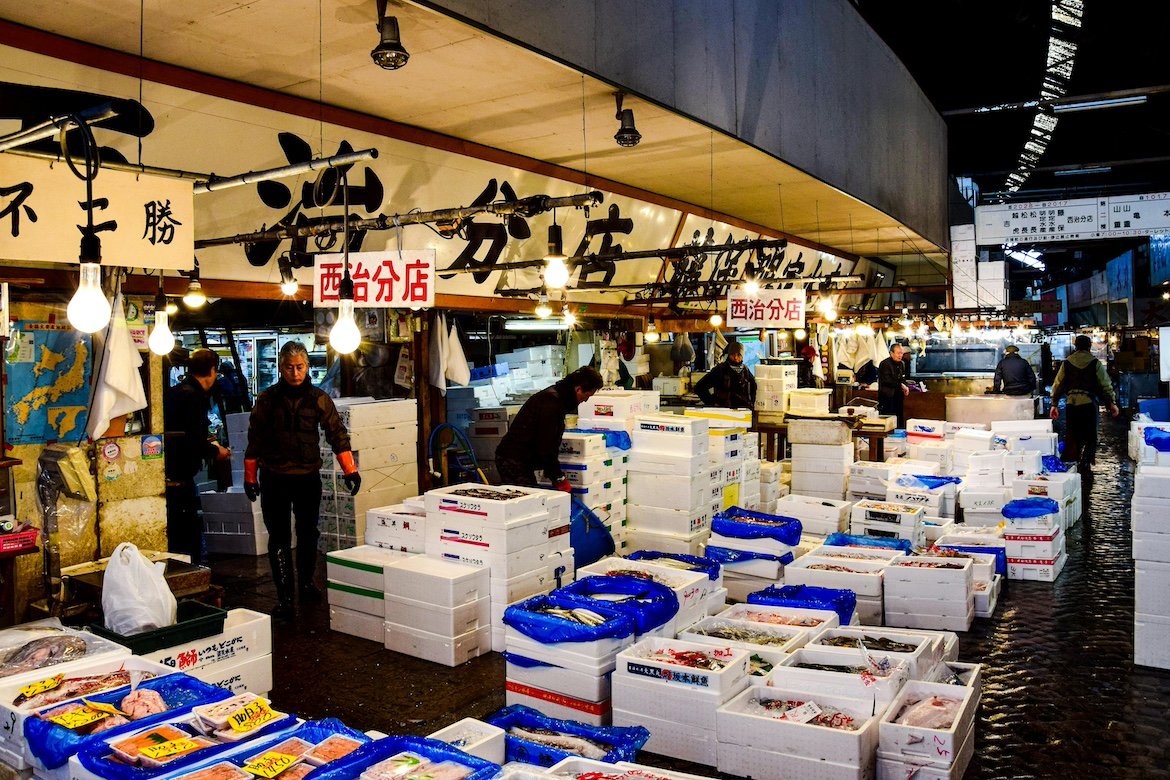
Even after the main fish market moved to Toyosu, the Tsukiji Outer Market remains an incredibly vibrant and essential culinary destination. This bustling labyrinth of stalls sells fresh seafood, produce, kitchenware, and delicious street food.
It’s a sensory overload in the best way possible, with vendors calling out and the aroma of fresh ingredients filling the air. You can sample incredible sushi, grilled seafood, tamagoyaki (rolled omelet), and much more, making it a must-visit for any food lover.
Find info here.
Ginza
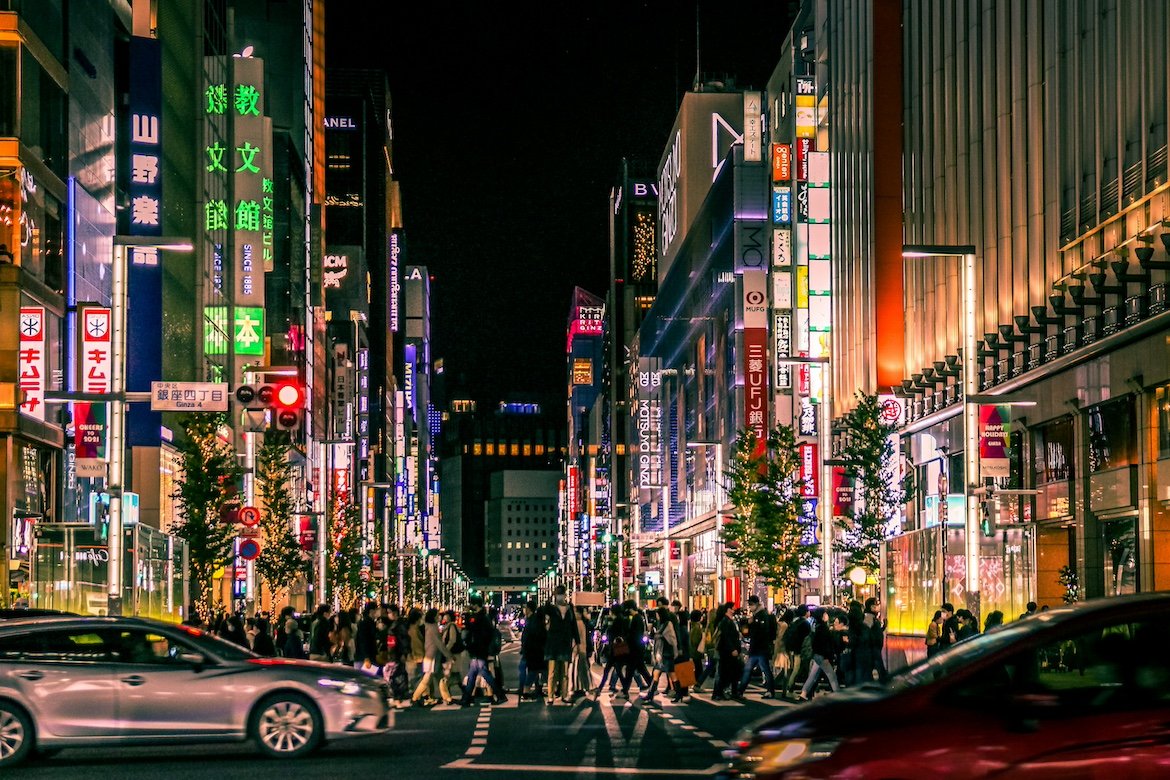
Experience Tokyo’s epitome of luxury and sophistication in Ginza, one of the world’s most exclusive shopping districts. Here, you’ll find flagship stores of high-end fashion brands, elegant department stores, and exquisite art galleries.
The area truly shines on weekends when its main street, Chuo-dori, becomes a pedestrian paradise, inviting leisurely strolls and window shopping. Beyond its retail allure, Ginza also boasts top-tier restaurants and the historic Kabuki-za Theatre, offering a glimpse into traditional Japanese performing arts.
Akihabara (Electric Town)
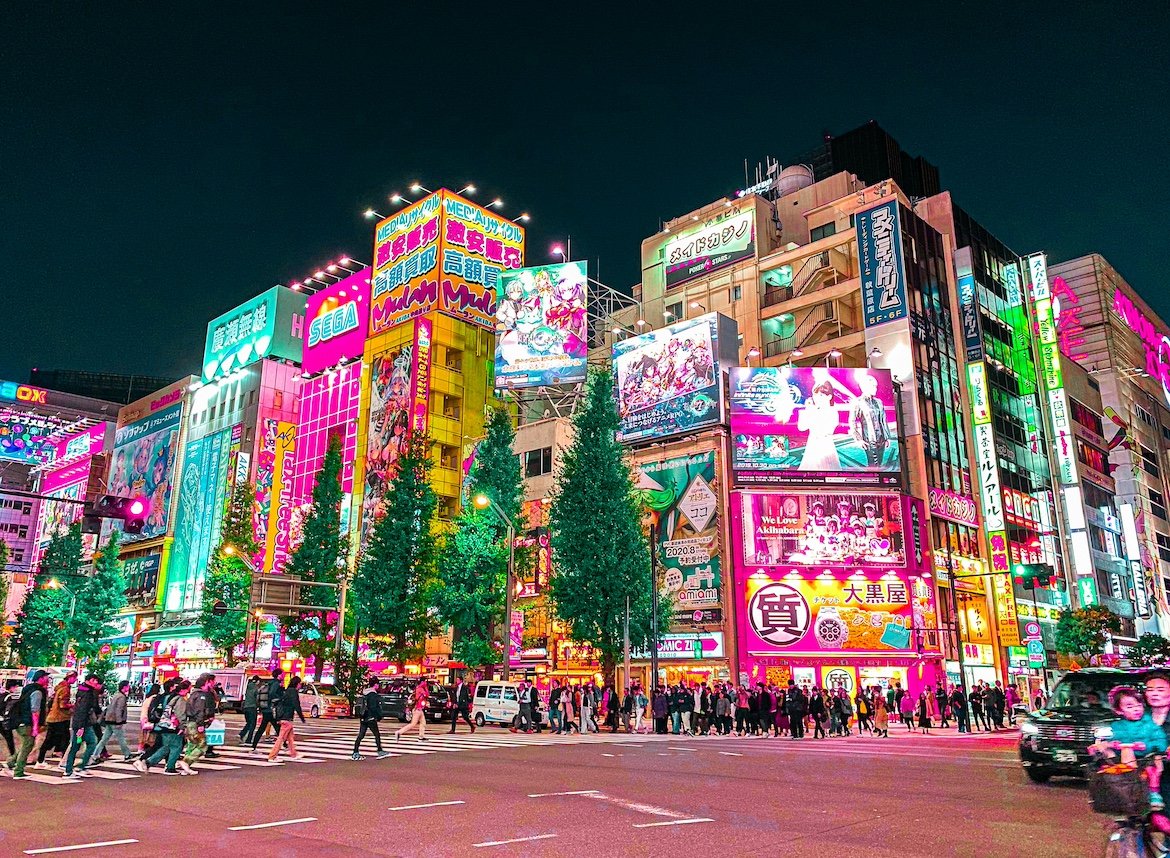
Dive into the electrifying heart of Tokyo’s otaku culture at Akihabara, also known as Electric Town. This district is a vibrant wonderland for fans of anime, manga, video games, and electronics. Bright neon signs illuminate multi-story stores dedicated to collectibles, arcades, and maid cafes, creating an exhilarating atmosphere.
Even if you’re not a dedicated enthusiast, exploring Akihabara’s unique energy and quirky offerings is an unforgettable experience, showcasing a distinct facet of modern Japanese pop culture.
Shinjuku
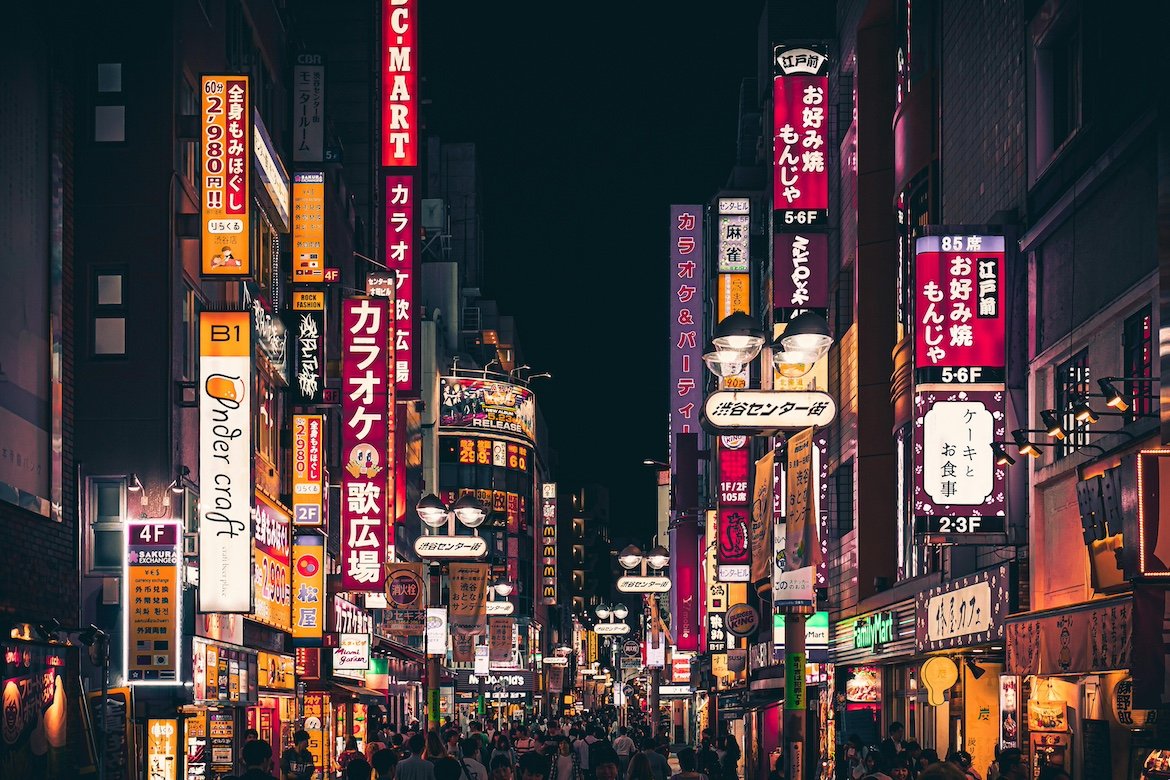
Shinjuku is one of Tokyo’s most dynamic and diverse districts, a true city within a city. It’s a bustling hub for business, entertainment, and shopping, characterized by its towering skyscrapers, vibrant nightlife, and serene green spaces.
From the futuristic charm of its high-rise buildings to the intimate alleys of the Golden Gai, Shinjuku offers a microcosm of Tokyo’s incredible contrasts. It’s an essential area to explore to truly understand the city’s modern pulse.
Tokyo Metropolitan Government Building Observation Decks
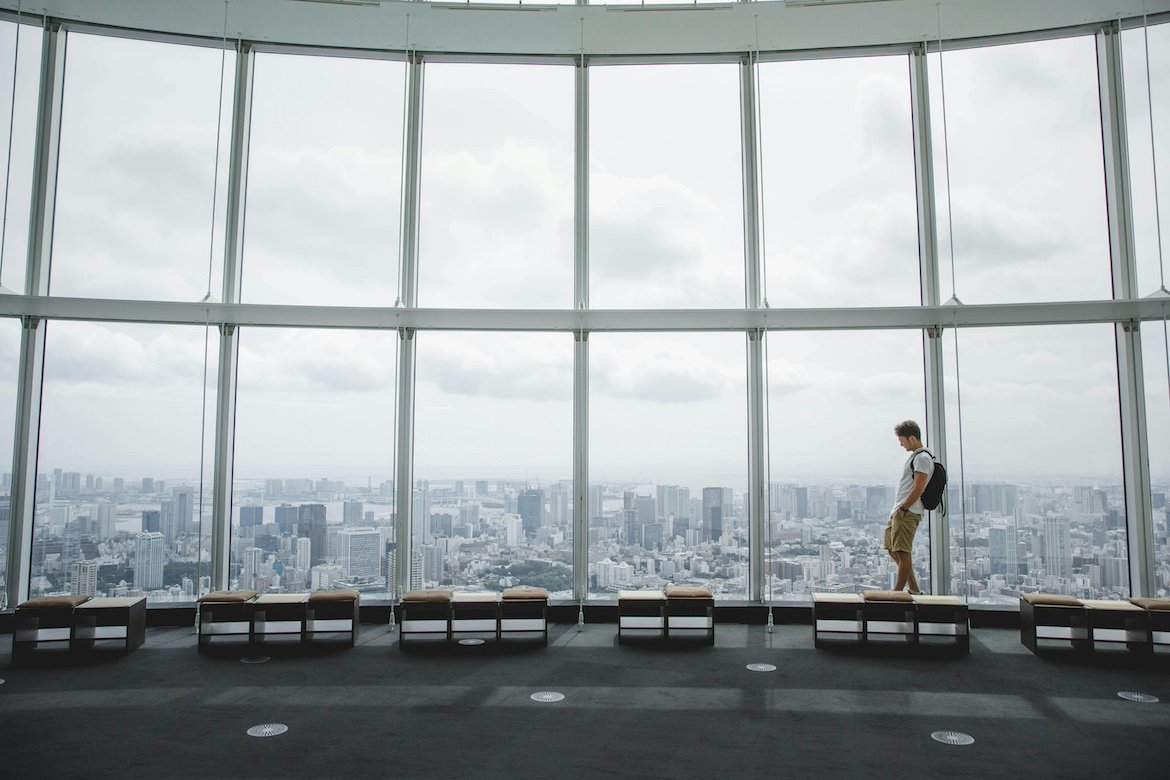
For a free and spectacular panoramic view of Tokyo, head to the Tokyo Metropolitan Government Building in Shinjuku. Its two towers each feature an observation deck on the 45th floor, offering breathtaking vistas of the sprawling city. On a clear day, you might even catch a glimpse of Mount Fuji in the distance. It’s an excellent alternative to paid observation decks and provides a comprehensive perspective of Tokyo’s immense scale.
Find info here.
Shinjuku Gyoen National Garden
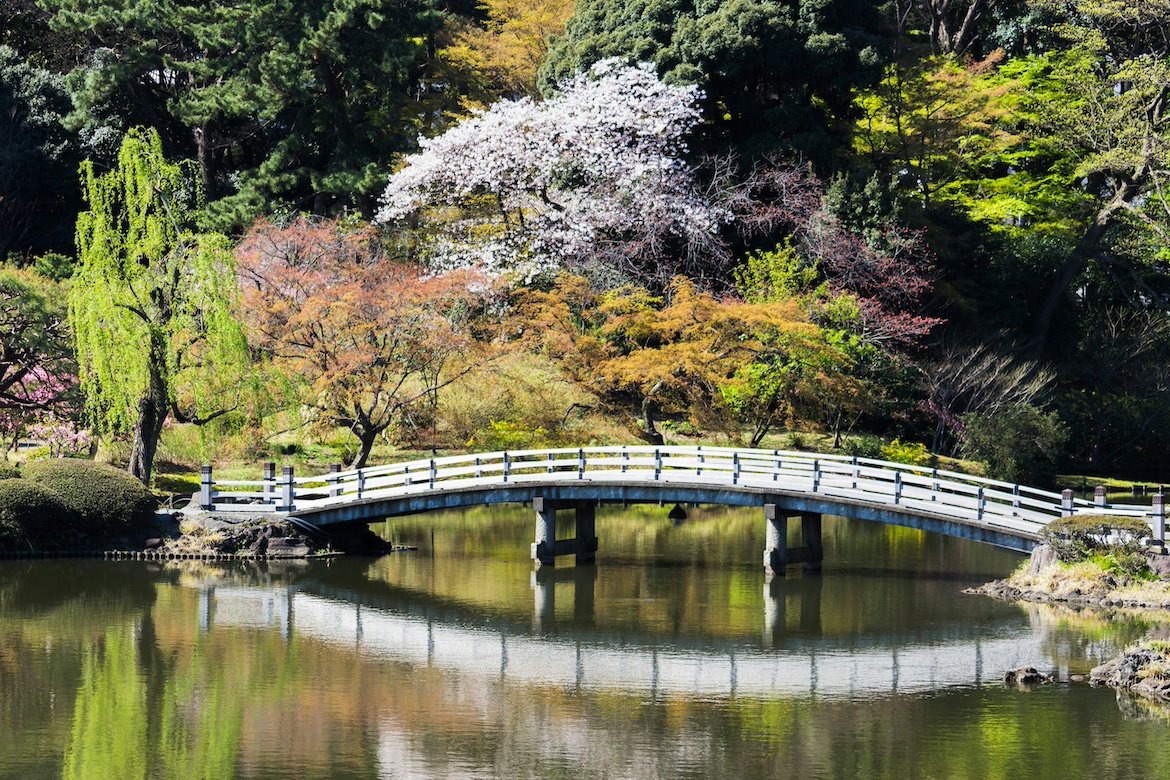
Escape the urban intensity at Shinjuku Gyoen National Garden, one of Tokyo’s most beautiful and expansive parks. This tranquil oasis features a harmonious blend of traditional Japanese, French formal, and English landscape garden styles.
Wander through its meticulously manicured lawns, serene ponds, and diverse plant collections. It’s a perfect spot for a relaxing afternoon, offering a peaceful retreat amidst the bustling energy of Shinjuku.
Find tickets & info here.
Tokyo City View at Mori Tower (Roppongi)
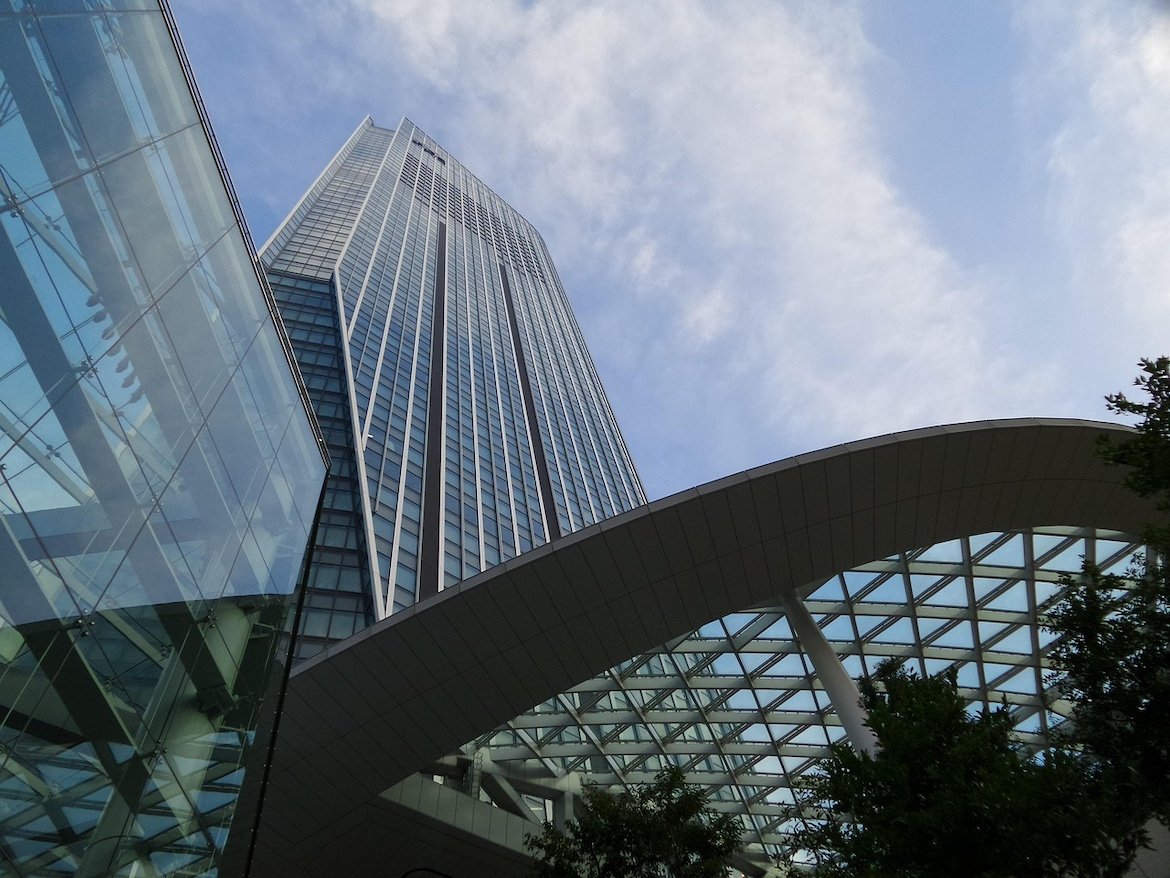
Perched atop the Mori Tower in the sophisticated Roppongi Hills complex, Tokyo City View offers another incredible perspective of the city skyline. What makes this observation deck unique is its open-air Sky Deck (weather permitting), providing an unobstructed 360-degree view, often preferred by photographers.
After enjoying the vistas, you can explore the Mori Art Museum also located within the tower (though the museum itself is for another section), or dine at one of Roppongi’s many upscale establishments.
Find tickets & info here.
Ueno Park
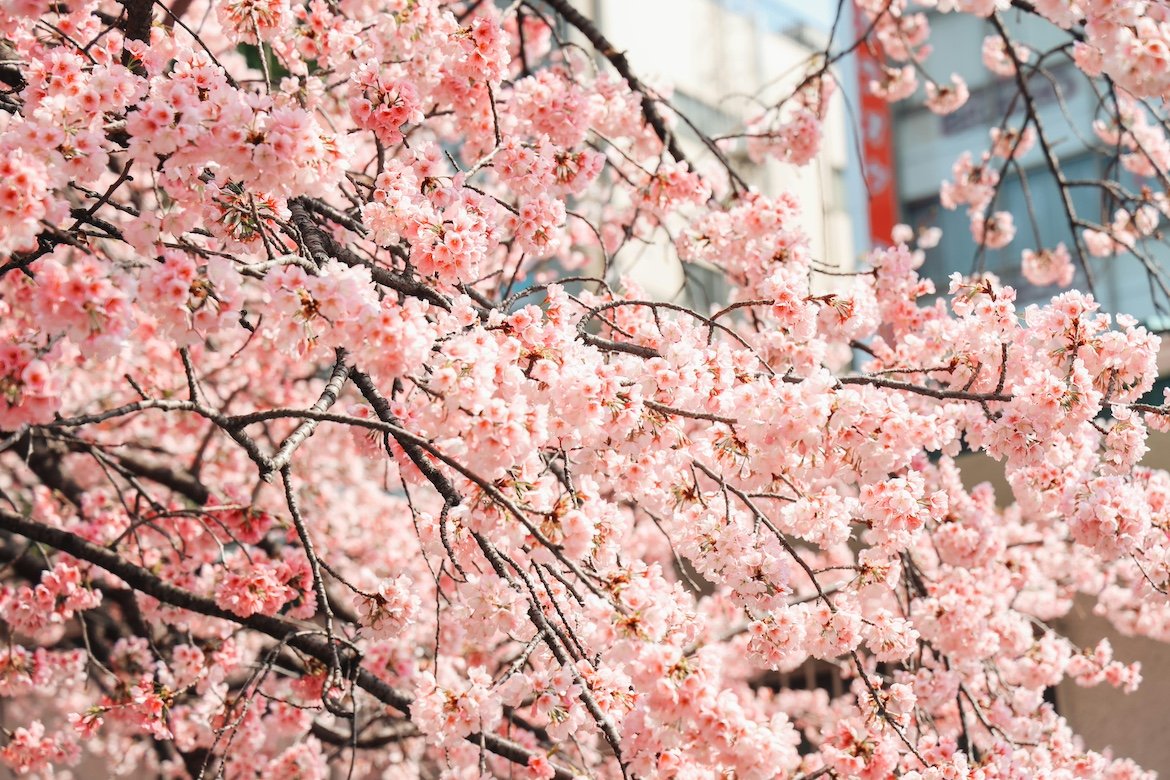
Ueno Park is a sprawling public space that serves as one of Tokyo’s primary cultural and recreational hubs. Beyond its lush green spaces, the park is home to several of Japan’s most prominent museums (which we’ll cover later), a zoo, and beautiful temples.
It’s a popular spot for cherry blossom viewing in spring and offers a relaxing environment for walks or picnics year-round. Exploring Ueno Park provides a pleasant blend of nature, culture, and local life.
Rainbow Bridge & Odaiba
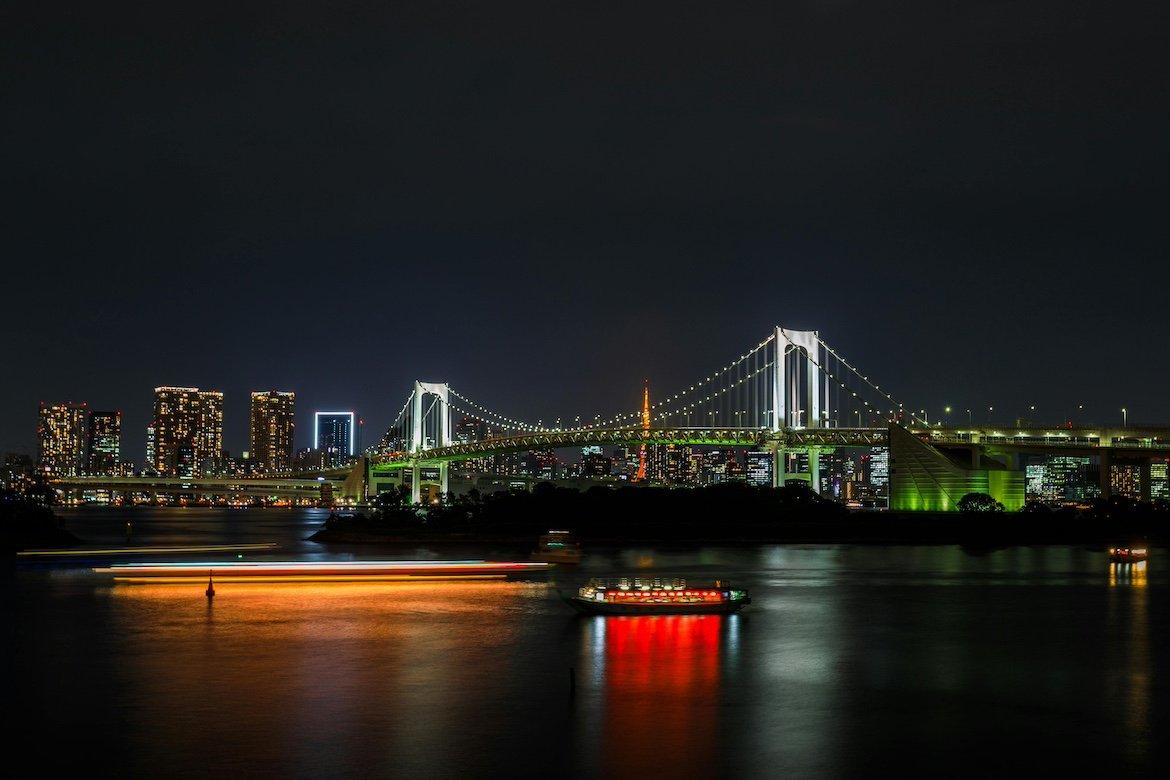
Step into the futuristic waterfront district of Odaiba, accessible via the iconic Rainbow Bridge. This man-made island is a hub of entertainment, shopping, and unique architecture, offering stunning views of the Tokyo skyline, especially at night.
You can visit attractions like the teamLab Borderless digital art museum (which we’ll discuss in Museums), ride the Ferris wheel, or simply stroll along the waterfront promenade. The journey across the Rainbow Bridge itself, whether by train or on foot, is a scenic experience not to be missed.
Tokyo Disneyland
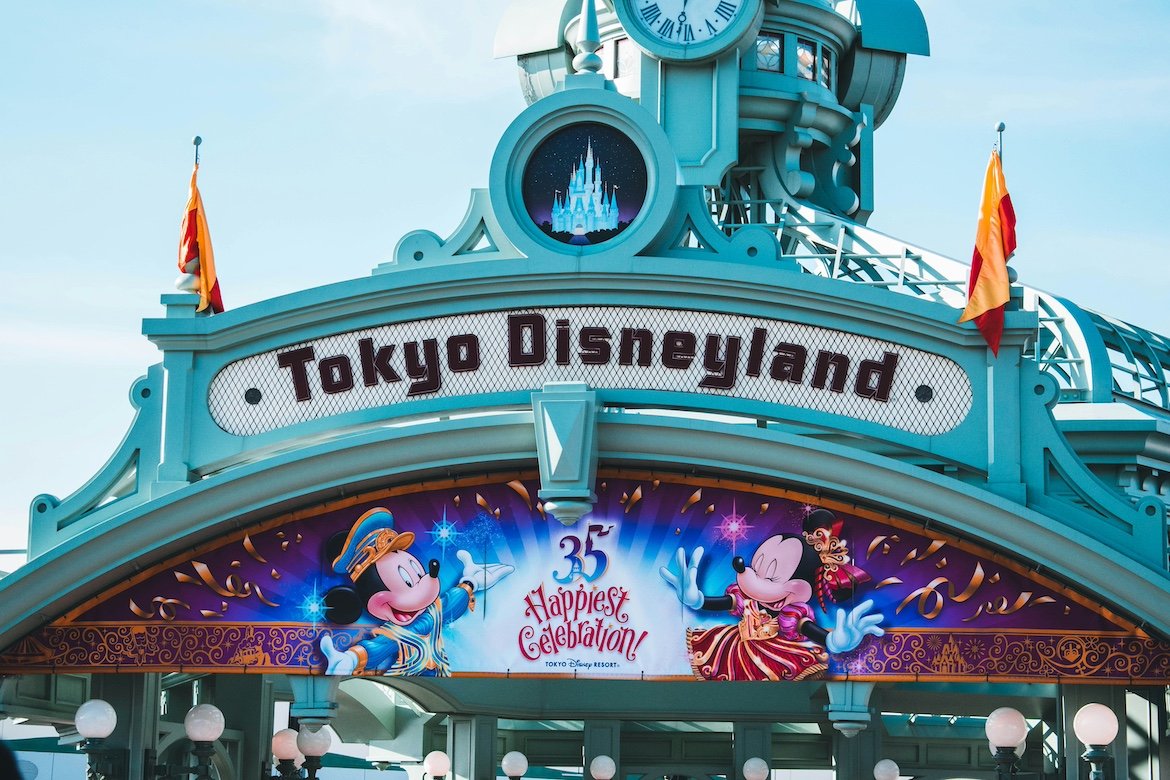
For a dose of magic and enchantment, venture to Tokyo Disneyland, Japan’s version of the beloved theme park, offering a truly unique Disney experience. This sprawling park features classic attractions, dazzling parades, and captivating shows, all infused with a distinct Japanese flair for hospitality and detail.
It’s a fantastic destination for families and anyone looking to relive childhood dreams, promising a day full of joy and unforgettable memories. While technically just outside central Tokyo in Chiba, its immense popularity makes it a must-see for many visitors.
Find tickets & info here.
Museums & Art
Tokyo’s artistic and intellectual landscape is as vibrant and diverse as the city itself. From ancient Japanese treasures to cutting-edge digital installations, and from natural history wonders to a deep dive into animation, the city’s museums and galleries offer countless opportunities for discovery. Prepare to be inspired, educated, and utterly captivated by these cultural havens.
Tokyo National Museum
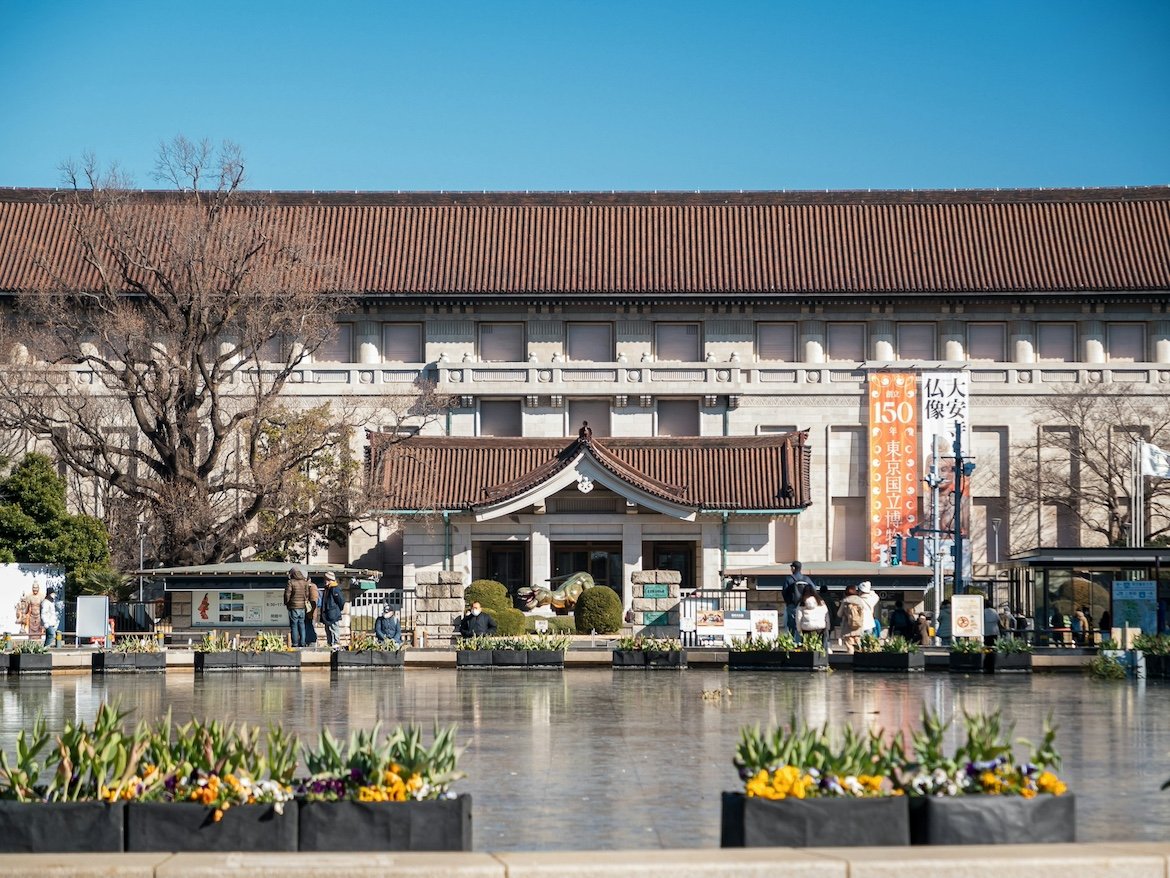
Located within the sprawling Ueno Park, the Tokyo National Museum is the largest and oldest national museum in Japan, a true treasure trove of Japanese and Asian art and antiquities. Its vast collection spans over 120,000 items, including national treasures and important cultural properties, offering a comprehensive journey through the country’s rich history and artistic evolution.
Wander through its impressive halls, particularly the Honkan (Japanese Gallery), to admire ancient ceramics, samurai armor, Buddhist sculptures, and exquisite textiles. It’s an indispensable stop for anyone looking to understand Japan’s profound cultural heritage.
Find tickets & info here.
National Museum of Nature and Science

Also situated in Ueno Park, the National Museum of Nature and Science provides a fascinating exploration of both natural history and scientific advancements. Divided into the Japan Gallery and the Global Gallery, it covers everything from dinosaur fossils and the evolution of life on Earth to the latest in space exploration and technology.
With numerous interactive exhibits and a full-size blue whale skeleton outside, it’s an engaging and educational experience for visitors of all ages, making complex scientific concepts accessible and fun.
Find tickets & info here.
Mori Art Museum

Perched atop the iconic Mori Tower in Roppongi Hills, the Mori Art Museum is a leading institution dedicated to contemporary art, with a strong focus on innovative works from Asia and beyond. Unlike many museums with permanent collections, Mori Art Museum is renowned for its dynamic and thought-provoking rotating exhibitions, often tackling global themes.
Its location also offers the bonus of breathtaking city views from the museum space itself, making it a truly unique cultural experience that combines art with an unparalleled urban panorama.
Find tickets & info here.
teamLab Planets TOKYO

Dive into an otherworldly, immersive digital art experience at teamLab Planets TOKYO in Toyosu. This unique museum challenges the traditional art viewing experience by inviting visitors to fully engage their senses. You’ll walk through water, interact with digital flowers that bloom and fade around you, and be surrounded by glowing, floating spheres.
It’s a captivating journey through light, sound, and technology, designed to dissolve the boundaries between the body and art. This extraordinary blend of art and technology creates unforgettable moments that are both beautiful and incredibly fun.
Find tickets & info here.
Ghibli Museum

For fans of the beloved Studio Ghibli films, the Ghibli Museum in Mitaka (a short train ride from central Tokyo) is a magical, must-visit destination. Designed by Hayao Miyazaki himself, the museum is less about exhibiting finished works and more about the art and spirit of animation, with whimsical displays, original sketches, and a mini-movie theatre showing exclusive short films.
Tickets are highly sought after and must be purchased in advance (often months ahead), as there are no on-site sales, ensuring a truly intimate and enchanting experience for every visitor.
Find tickets & info here.
The National Art Center, Tokyo
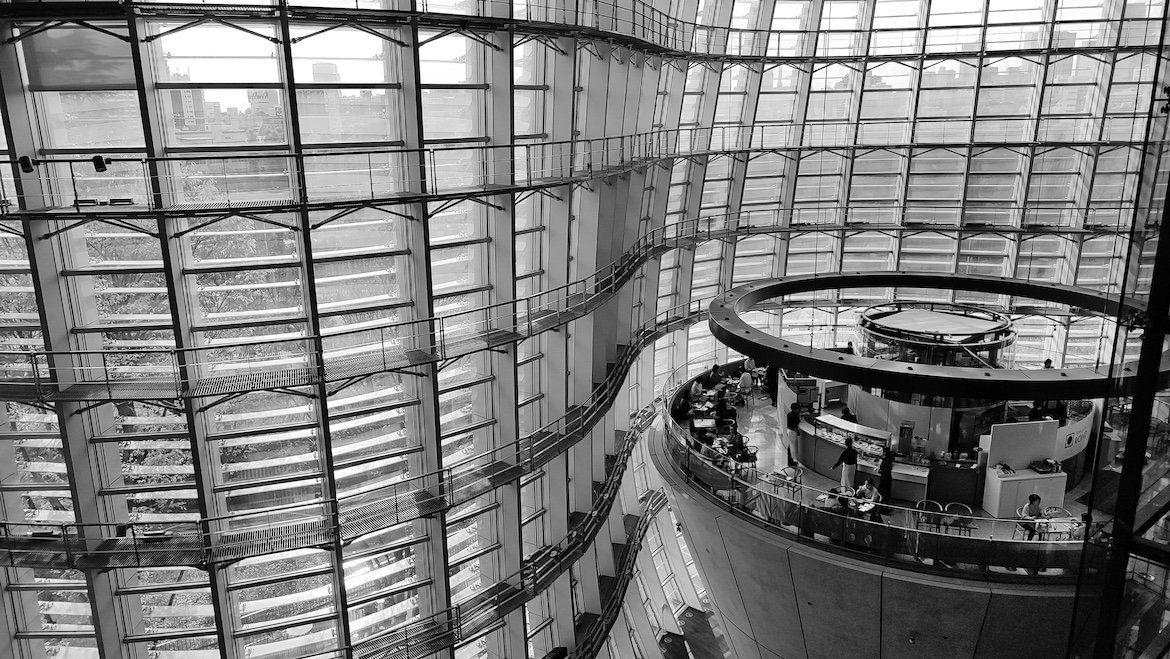
Distinguished by its striking glass-wave façade, The National Art Center, Tokyo in Roppongi is an architectural marvel and a significant player in Japan’s art scene. Unlike traditional museums, NACT doesn’t maintain a permanent collection but rather serves as a vast exhibition space, hosting a wide array of large-scale international and domestic exhibitions.
This dynamic approach means there’s always something new and exciting to see, from retrospective shows of master artists to cutting-edge contemporary installations. Its grand atrium and innovative design make a visit worthwhile even just for the architecture.
Find tickets & info here.
What to Do
Tokyo offers an endless array of activities, catering to every interest, from ancient traditions to cutting-edge pop culture. This section highlights immersive experiences that will allow you to delve deeper into the city’s unique charm. Whether you’re looking for a peaceful escape or an energetic adventure, Tokyo has something special in store.
Experience a Traditional Tea Ceremony
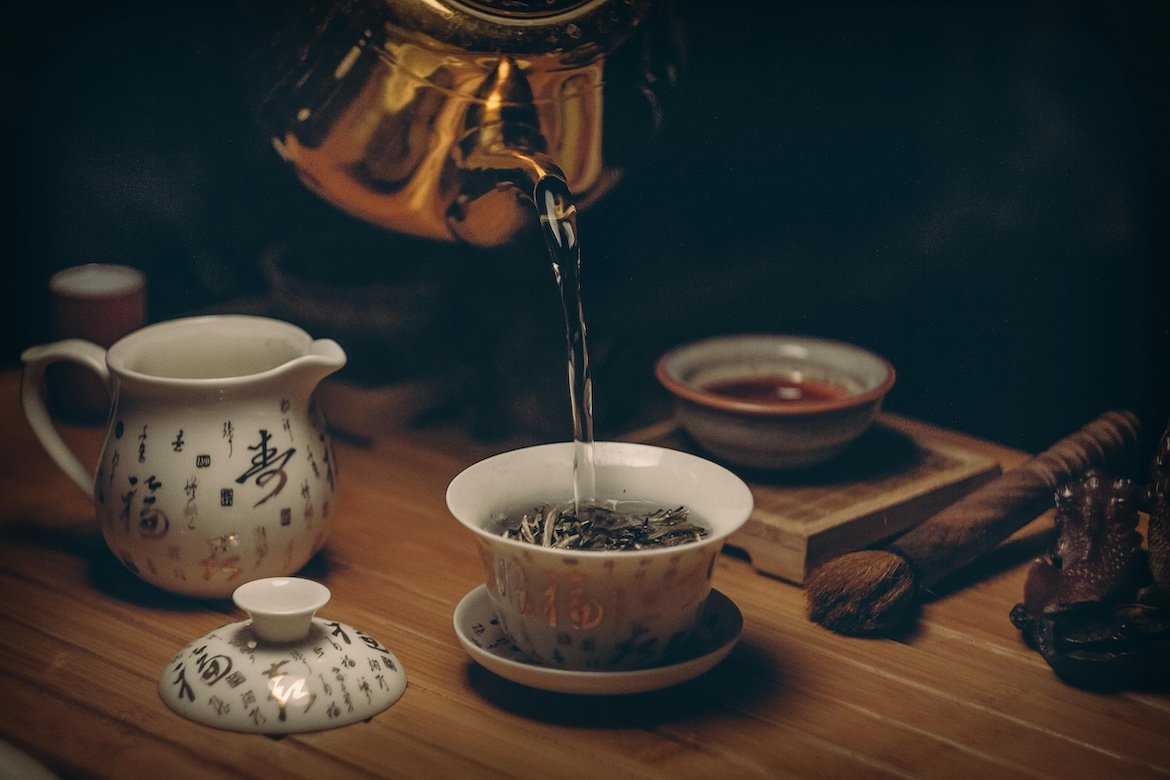
Step into a world of tranquility by participating in a traditional Japanese tea ceremony. This ancient ritual, known as Chado or “The Way of Tea,” emphasizes harmony, respect, purity, and tranquility. You’ll learn about the ceremonial preparation of matcha (powdered green tea) and the philosophical significance behind each gesture.
Various tea houses and cultural centers offer authentic experiences, providing a serene contrast to the city’s fast pace and a memorable insight into Japanese aesthetics.
Find info & booking here.
Sing Your Heart Out at Karaoke
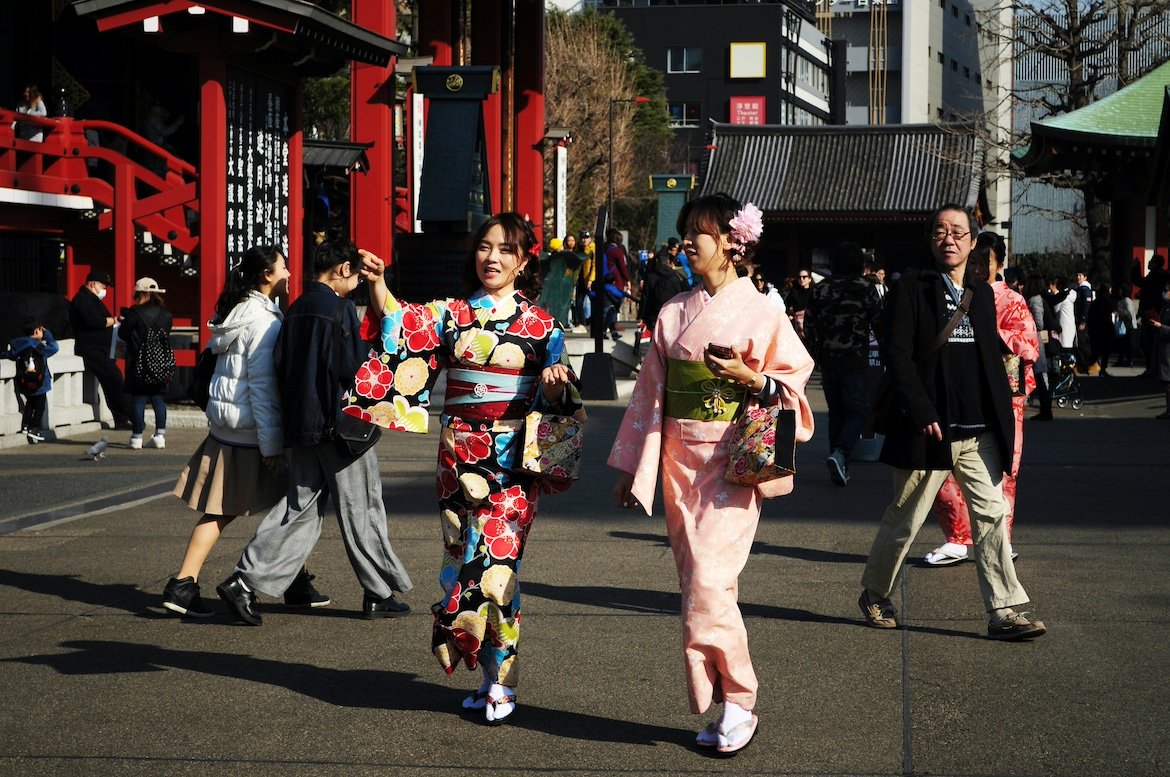
Embrace one of Japan’s most popular pastimes by enjoying a karaoke session. Tokyo is home to countless karaoke establishments, ranging from multi-story complexes to cozy, private booths perfect for a small group.
You can choose from an extensive selection of songs, from Japanese hits to international classics, and order drinks and snacks directly to your room. It’s a fantastic way to unwind, have fun with friends, and experience the lively entertainment culture deeply ingrained in Japanese society.
Explore Tokyo’s Nightlife
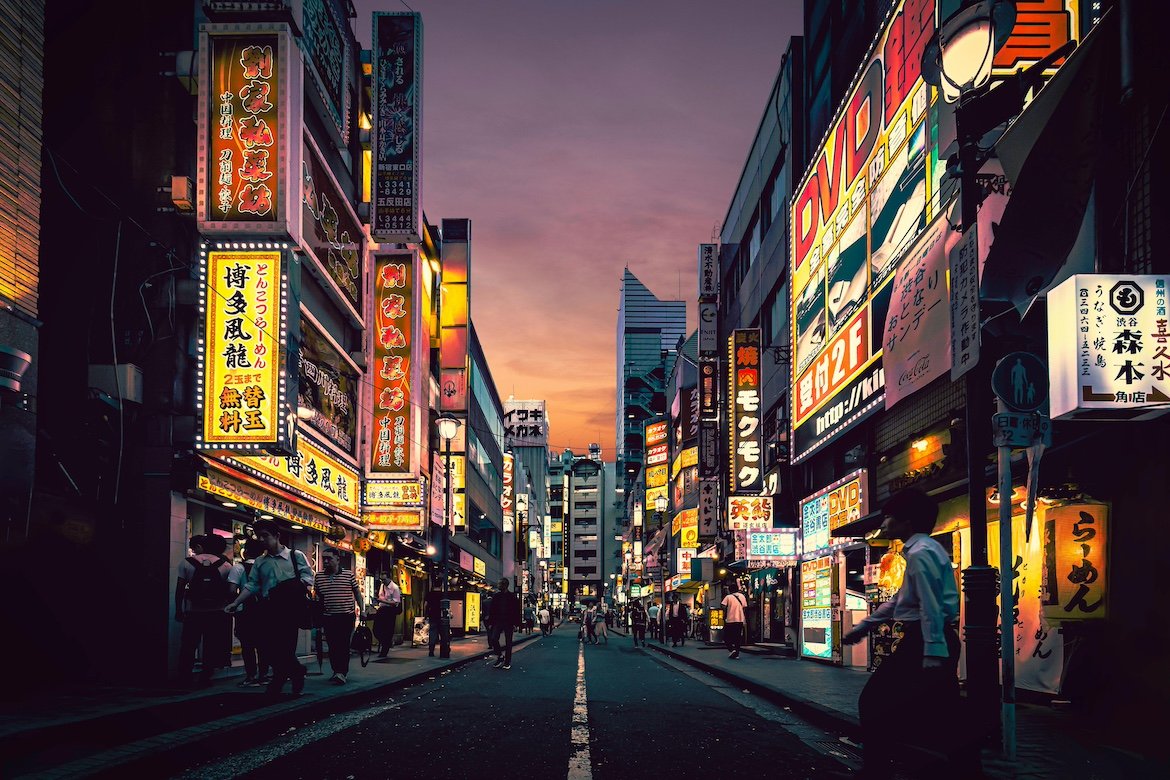
As the sun sets, Tokyo transforms into a dazzling playground, offering an incredible array of nightlife experiences. For a truly unique atmosphere, head to Golden Gai in Shinjuku, a tiny labyrinth of narrow alleys packed with over 200 minuscule bars.
Other vibrant areas like Shibuya and Roppongi offer larger clubs, lively izakayas (Japanese pubs), and international bars. Whether you seek a quiet, intimate drink or a night of dancing, Tokyo’s diverse nightlife scene has something for everyone.
Take a Japanese Cooking Class
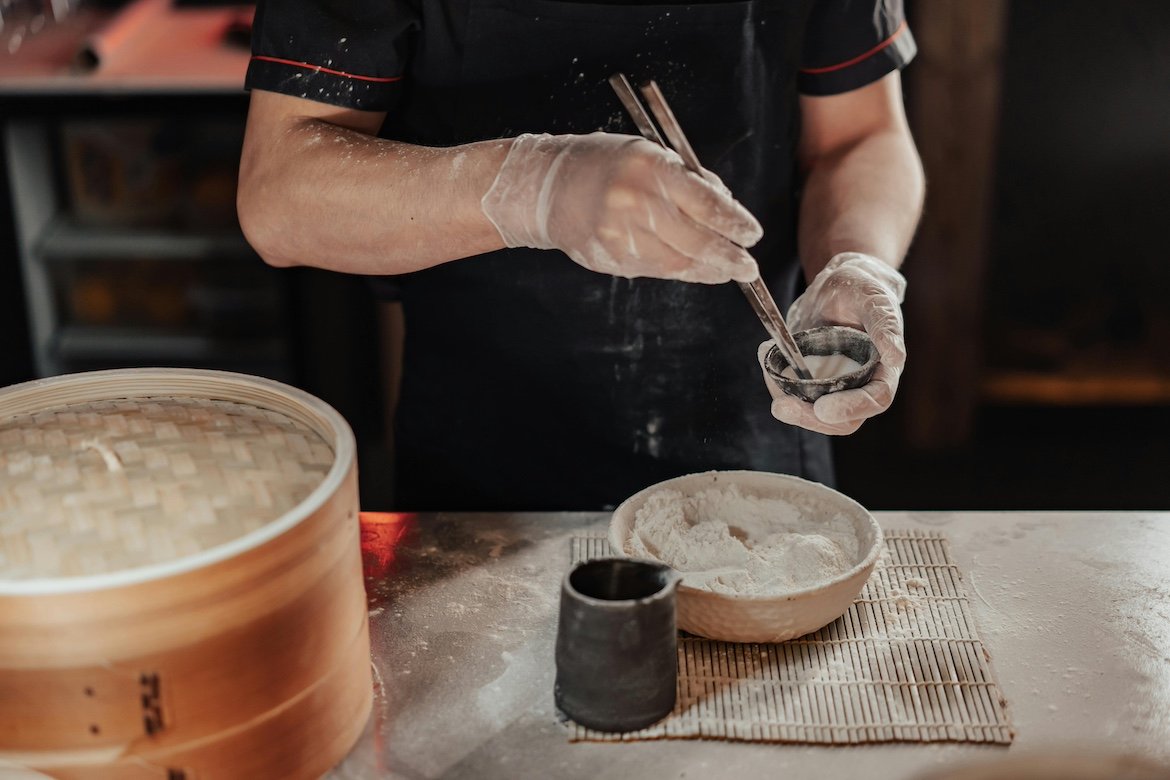
Delve into the art of Japanese cuisine by taking a cooking class. This hands-on experience allows you to learn the secrets behind preparing beloved dishes like sushi, ramen, tempura, or gyoza from local chefs.
Many classes offer insights into Japanese ingredients, cooking techniques, and presentation, empowering you to recreate these delicious flavors at home. It’s an interactive and flavorful way to deepen your appreciation for Japanese food and culture.
Find booking options here.
Watch a Sumo Wrestling Tournament

If your visit aligns with one of the three annual sumo tournaments held in Tokyo (January, May, and September), attending a match is an unforgettable cultural and sporting spectacle. Witness the raw power and ancient rituals of Japan’s national sport at the Ryogoku Kokugikan arena.
The atmosphere is electric, with fans cheering on their favorite rikishi (sumo wrestlers). Even if you don’t catch a live tournament, you can visit the Sumo Museum next to the arena for a glimpse into sumo history.
Find tickets & info here.
Relax in a Traditional Japanese Garden
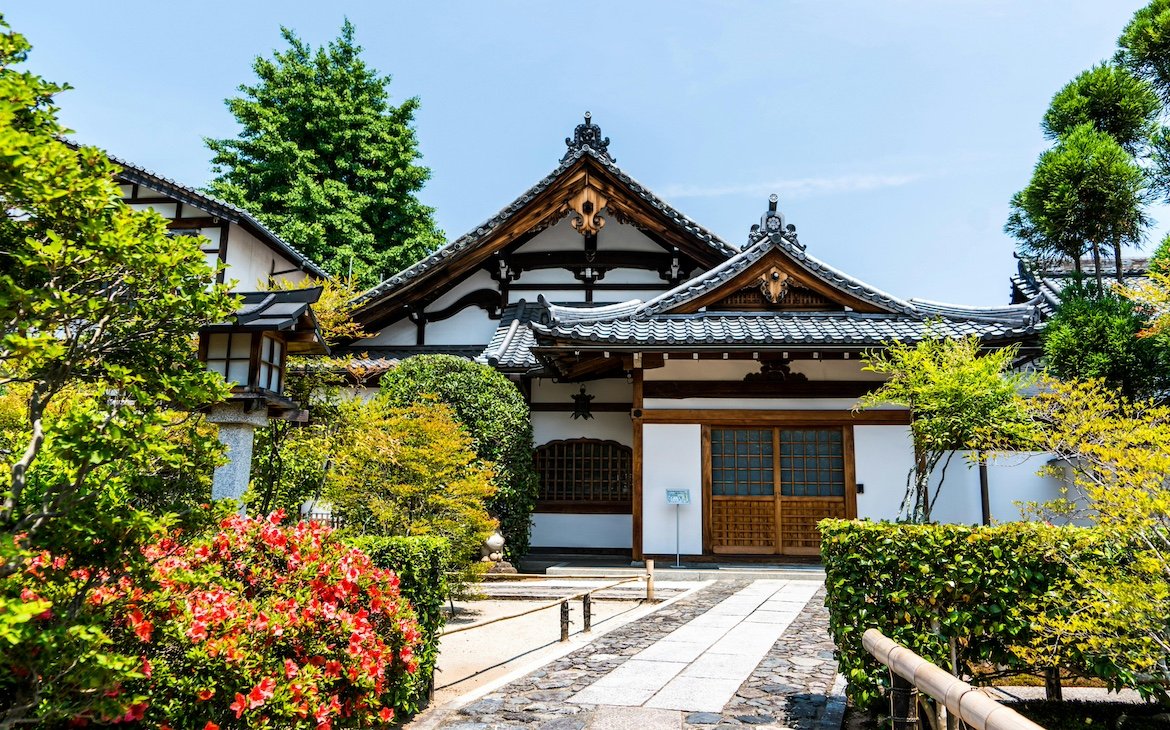
Visiting a beautiful traditional Japanese garden like Rikugien Garden offers a peaceful respite. This exquisitely designed garden, completed in 1702, is a prime example of a kaiyu-shiki-teien (strolling garden) with a central pond, rolling hills, and carefully placed trees.
It’s particularly stunning during autumn for its vibrant foliage and at night during special illuminations. It provides a serene environment for quiet contemplation and appreciation of Japanese landscape artistry.
Find info here.
Indulge in Department Store Shopping
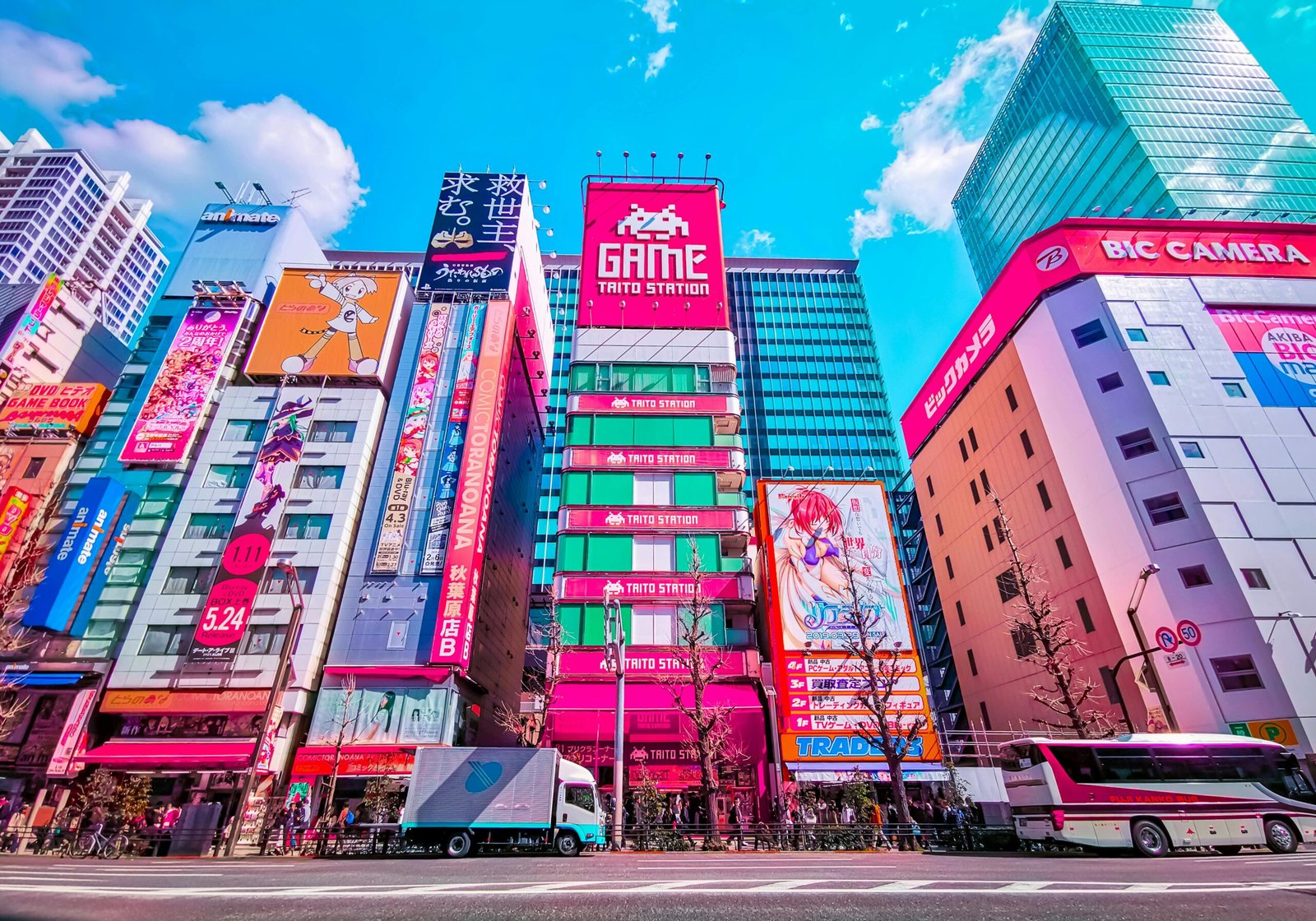
Beyond the trendy boutiques of Harajuku and the luxury brands of Ginza, indulging in department store shopping offers a quintessential Tokyo experience. Major department stores like Isetan (Shinjuku), Takashimaya (Shinjuku, Nihonbashi), and Mitsukoshi (Nihonbashi) are destinations in themselves.
Explore their vast floors, from fashion and homeware to incredible food basements (depachika) offering gourmet delights and prepared foods. It’s a fascinating insight into Japanese consumer culture and a perfect spot for souvenir hunting.
Where to Eat
Tokyo’s food scene is as diverse and dynamic as the city itself, a true heaven for any food lover. Whether you’re seeking traditional Japanese delicacies, international gourmet experiences, or a cozy spot for coffee, Tokyo delivers unparalleled culinary adventures. Get ready to embark on a delicious journey through its countless eateries.
Popular Tourist Spots
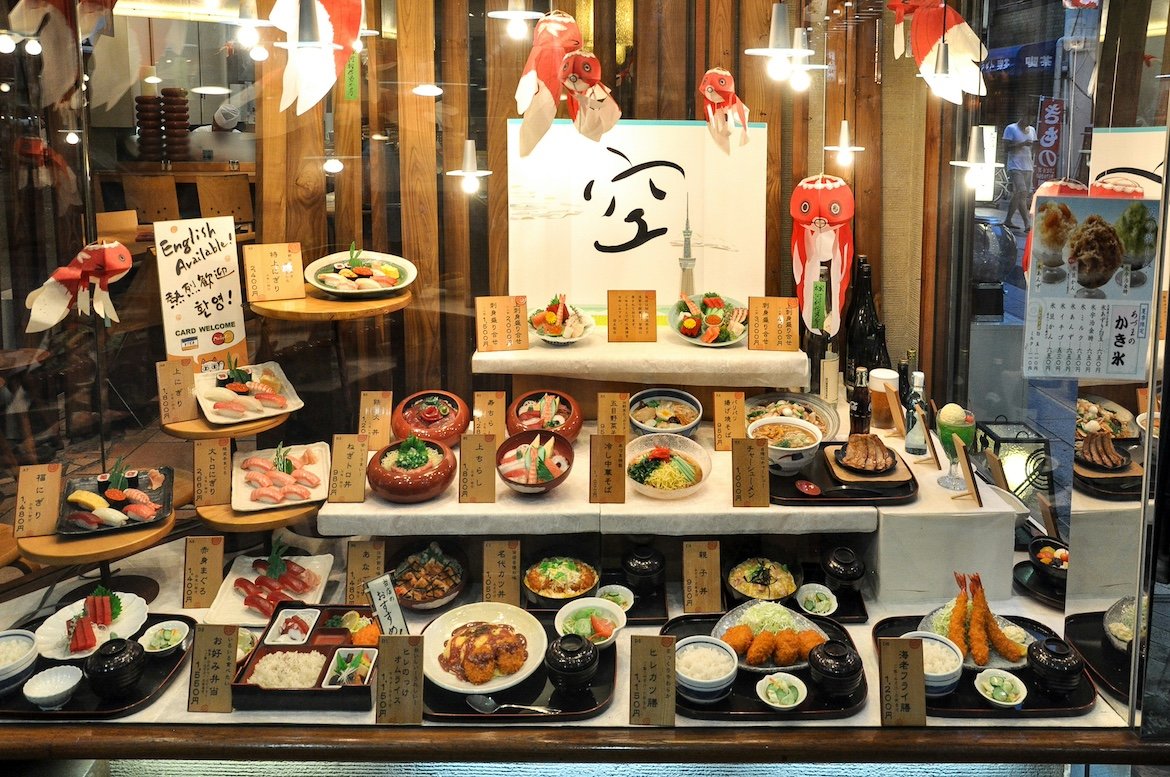
These establishments are widely recognized and frequently visited by travelers, offering excellent quality and a convenient introduction to some of Japan’s most iconic dishes. They are often bustling and well-located, making them great choices for a classic Tokyo dining experience.
- Ichiran Ramen (Shinjuku)
Experience Ichiran’s unique “flavor concentration booths,” allowing you to customize your ramen order and enjoy your meal in solitude. Famous for its classic tonkotsu broth, this chain offers a consistent and delicious ramen experience perfect for a quick, focused meal. It’s a popular choice for both locals and tourists alike, open late into the night. - Maisen Tonkatsu (Omotesando)
Often cited as one of Tokyo’s best tonkatsu (deep-fried pork cutlet) restaurants, Maisen offers incredibly tender and juicy pork. Their signature dish is served with crisp breading and a delicious sauce, creating a perfect balance of textures and flavors. Housed in a beautifully renovated former public bathhouse, it provides a charming and memorable dining atmosphere. - Gonpachi Nishi-Azabu
Famously known as the inspiration for a scene in Quentin Tarantino’s “Kill Bill,” Gonpachi offers a lively, atmospheric dining experience. Specializing in robatayaki (charcoal-grilled skewers) and traditional Japanese cuisine, it’s a great place to enjoy delicious food in a vibrant, spacious setting. Its rustic, Edo-period ambiance makes it a popular choice for international visitors. - Sushi Zanmai (Tsukiji)
A highly accessible and popular sushi chain, Sushi Zanmai is famous for its fresh, high-quality seafood at reasonable prices. The main branch in Tsukiji is open 24 hours, making it perfect for an early morning sushi fix after exploring the Outer Market or a late-night craving. It’s a reliable choice for delicious, no-frills sushi that truly satisfies. - Luke’s Lobster (Omotesando)
Bringing a taste of the American East Coast to Tokyo, Luke’s Lobster specializes in simple yet incredibly delicious lobster rolls. Their rolls are generously filled with fresh, succulent lobster meat lightly dressed and served on a buttered, toasted bun. It’s a casual and trendy spot perfect for a quick, satisfying bite, especially popular in the stylish Omotesando area. - Gyukatsu Motomura (Shinjuku)
Gyukatsu Motomura is a must-try for meat lovers, specializing in gyukatsu – a rare beef cutlet that is lightly breaded and deep-fried. The unique experience allows you to finish cooking your slice of beef to your preferred doneness on a hot stone grill right at your table. It’s a highly sought-after, delicious, and interactive meal that truly highlights a different side of Japanese fried delicacies.
Local Favorites
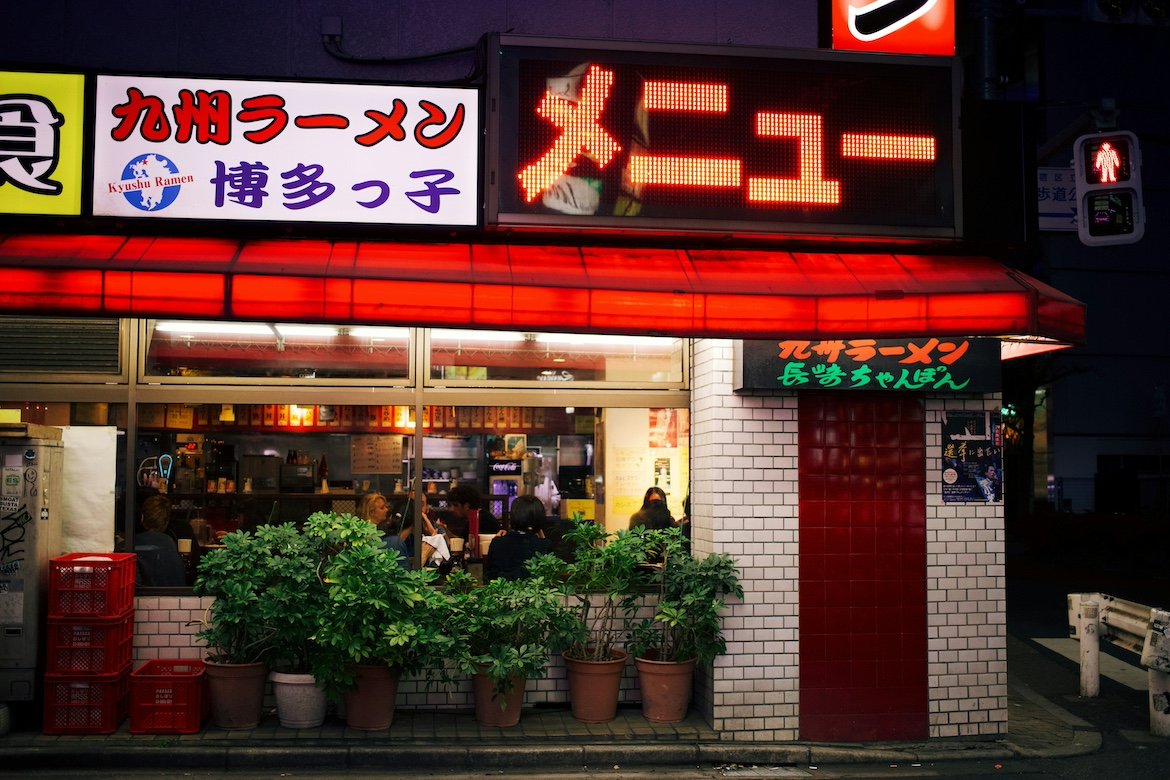
These spots are often frequented by locals and offer a genuine taste of Tokyo’s everyday culinary scene, providing authentic flavors away from the main tourist hubs or in a more specialized setting.
- Afuri Ramen (Ebisu)
Unlike many tonkotsu-based ramen shops, Afuri is celebrated for its lighter, yet incredibly flavorful, yuzu-shio ramen. The broth is a delicate blend of chicken and seafood, infused with the refreshing citrusy notes of yuzu. It’s a favorite among locals seeking a refined and less heavy ramen experience, often found in trendy neighborhoods like Ebisu. - Omoide Yokocho
Literally “Memory Lane,” Omoide Yokocho is a charmingly nostalgic alleyway in Shinjuku filled with tiny, atmospheric izakayas and yakitori stalls. Squeeze into one of the cramped, smoke-filled establishments and enjoy cheap drinks and grilled skewers alongside local office workers. It’s a fantastic spot to experience old-school Tokyo charm and authentic, no-frills Japanese pub culture. - Tonkatsu Aoki (Daimon)
For a more serious and arguably even more refined tonkatsu experience than the popular chains, Tonkatsu Aoki in Daimon is a local gem. Known for its meticulous preparation and use of premium pork cuts, it offers an incredibly crispy exterior and a wonderfully tender, flavorful interior. This spot is highly regarded by connoisseurs seeking a top-tier version of this beloved Japanese dish. - Curry House CoCo Ichibanya (Multiple locations)
CoCo Ichibanya is Japan’s most popular curry chain and a beloved local favorite for its customizable and comforting Japanese-style curry. You can choose your spice level, rice portion, and a wide array of toppings, from fried chicken to vegetables. It’s a ubiquitous and affordable spot to enjoy a hearty, flavorful meal, showcasing the casual, everyday dining habits of Tokyoites. - Uoriki Kaisen Sushi (Shibuya)
Located within the bustling Shibuya Mark City building, Uoriki Kaisen Sushi offers a fantastic value standing sushi bar experience. It’s a popular choice for locals looking for incredibly fresh, high-quality sushi at very reasonable prices, perfect for a quick and satisfying bite. The lively atmosphere and rapid service contribute to an authentic Tokyo dining feel. - Shibuyakko
Nestled in the backstreets of Shibuya, Shibuyakko is a cozy and authentic izakaya specializing in oden, a traditional Japanese hot pot stew. Here, you can enjoy various ingredients simmered in a savory dashi broth, alongside a selection of sake and other drinks. It offers a warm, inviting atmosphere and a taste of classic Japanese comfort food, making it a hidden gem for locals.
Cafés & Coffee Shops
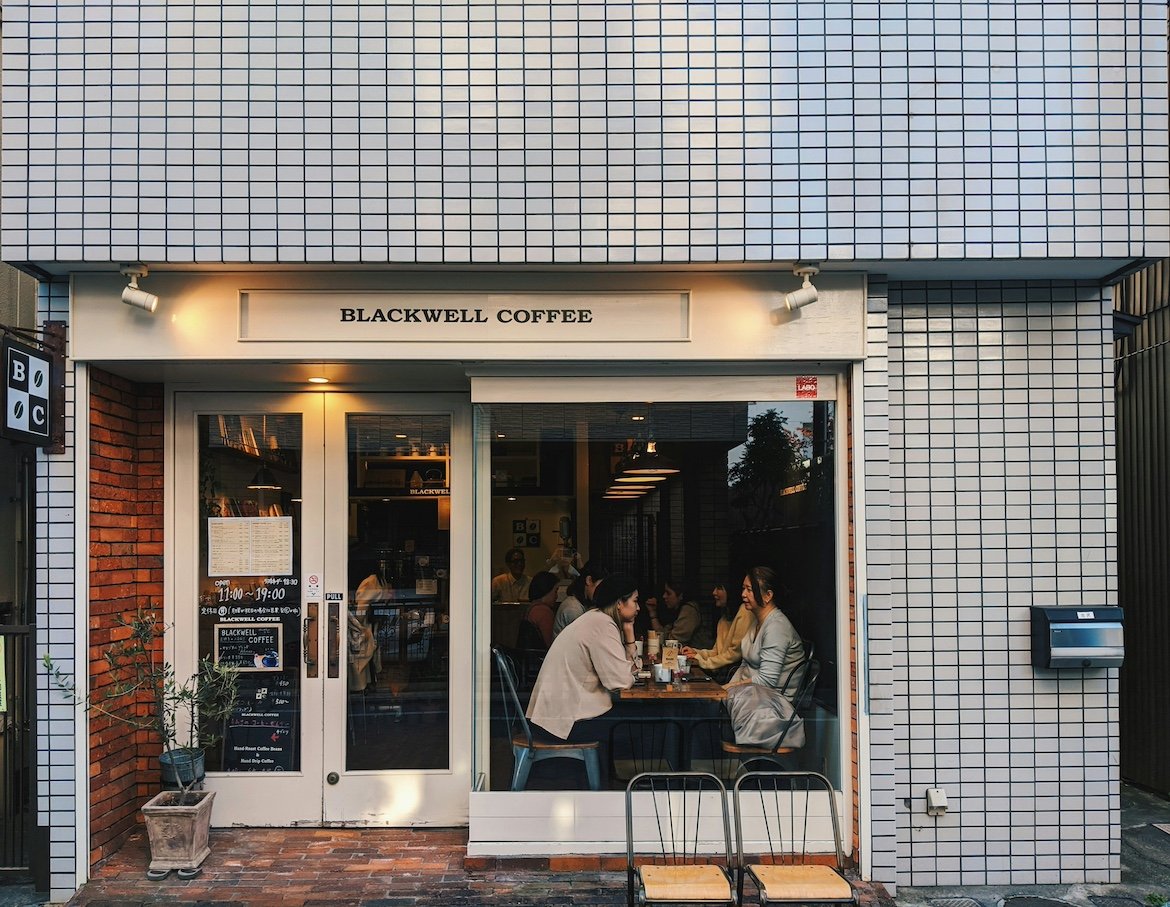
Tokyo’s café culture is thriving, offering everything from grand historic coffee houses to trendy modern spots perfect for a morning brew, an afternoon treat, or a quiet moment amidst the urban buzz.
- Starbucks Reserve Roastery Tokyo
More than just a coffee shop, the Starbucks Reserve Roastery Tokyo is an architectural marvel and a multi-level coffee wonderland. Located by the serene Meguro River, it offers a fascinating insight into coffee roasting, exquisite pastries, cocktails, and exclusive Starbucks Reserve beverages. It’s a vast, immersive experience that combines high-quality coffee with stunning design. - Blue Bottle Coffee (Shinjuku)
Known for its minimalist aesthetic and meticulous approach to coffee brewing, Blue Bottle Coffee offers a premium specialty coffee experience. With several locations across Tokyo, they focus on freshness and quality, serving perfectly brewed pour-overs, espressos, and pastries. It’s a popular spot for coffee purists and those seeking a calm, stylish environment. - Fuglen Coffee Roasters Tokyo
Hailing from Oslo, Fuglen Coffee Roasters Tokyo brings a unique blend of coffee culture, cocktail bar, and vintage design to the city. Located in a quieter part of Shibuya, it’s a popular spot for remote workers and coffee aficionados. Enjoy their expertly roasted beans during the day, and then watch the space transform into a cozy cocktail bar by night. - Sarutahiko Coffee (Ebisu)
A beloved local Japanese specialty coffee chain, Sarutahiko Coffee has grown from a small shop in Ebisu into a Tokyo staple. They roast their own beans and are known for their friendly service and high-quality brews. It’s a great place to experience authentic Japanese coffee culture, offering a comfortable atmosphere perfect for a morning pick-me-up or an afternoon break. - STREAMER COFFEE COMPANY (Shibuya)
STREAMER COFFEE COMPANY is famous for its large lattes and stunning latte art, often featuring intricate designs. With its industrial-chic interior and relaxed vibe, it’s a popular spot for a casual coffee break. It caters to a younger, more artistic crowd and is a great place to grab a visually impressive and delicious coffee. - Cafe de l’Ambre (Ginza)
For a truly classic Tokyo coffee experience, visit Cafe de l’Ambre in Ginza. This legendary coffee shop, established in 1948, is dedicated solely to coffee and offers an old-school, sophisticated atmosphere. They specialize in aged coffee beans and unique brewing methods, providing a rich, deep flavor. It’s a quiet, intimate spot perfect for savoring a meticulously prepared cup.
How to Get Around
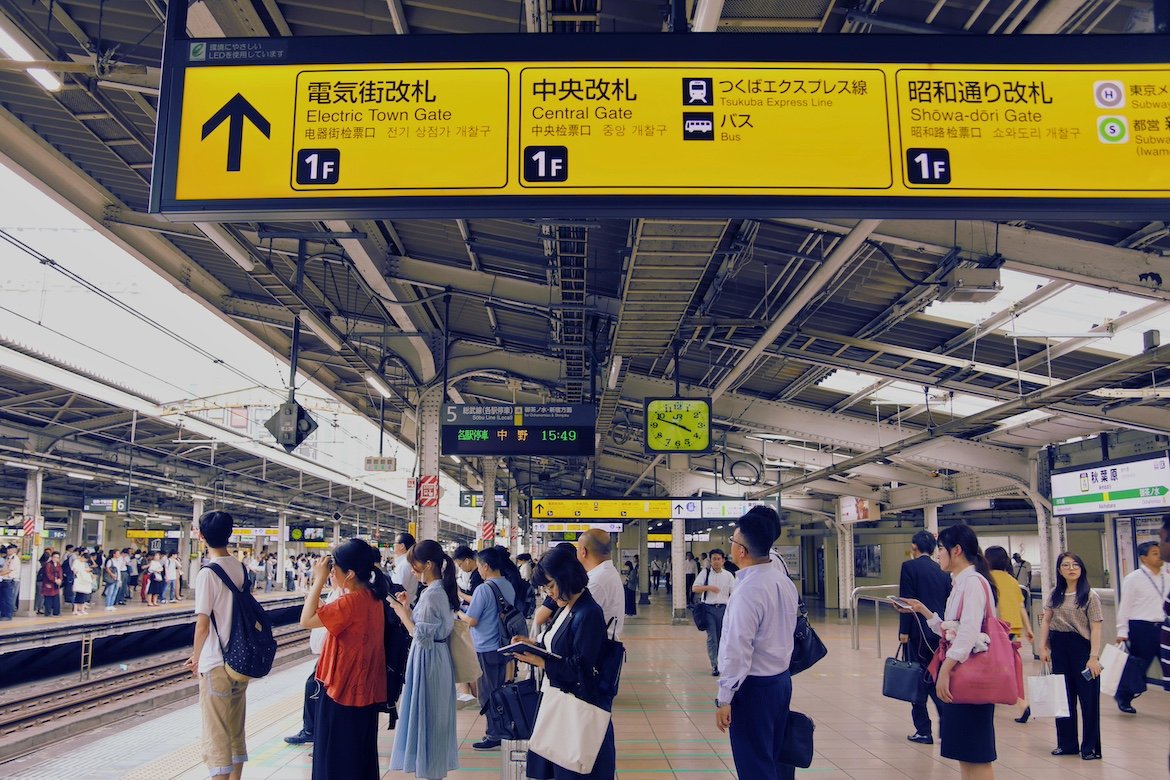
Tokyo boasts one of the most comprehensive, punctual, and user-friendly public transportation systems in the world. Dominated by its extensive train and subway networks, getting around this sprawling metropolis is surprisingly straightforward once you understand the basics. Embrace the public transport; it’s the fastest, most economical, and often the most exciting way to experience the city.
Public Transport: Trains and Subways Reign Supreme
Tokyo’s public transport is a marvel of modern engineering, primarily relying on its dense network of trains and subways. The system is operated by various companies, including JR (Japan Railways) (most notably the Yamanote Line, which circles major hubs) and two subway operators, Tokyo Metro and Toei Subway.
These networks seamlessly connect every corner of the city, running frequently and with incredible punctuality. You’ll find stations are clean, well-signed in English, and often have staff available for assistance.
Essential Tips for Public Transport:
- Get an IC Card (Suica or Pasmo): These rechargeable smart cards are your best friend for seamless travel. Simply tap in and out of stations or on buses. They can be purchased at ticket machines and used across nearly all public transport networks in Japan, saving you the hassle of buying individual tickets for every ride. They can even be used at many convenience stores and vending machines.
- Use Navigation Apps: Apps like Google Maps are incredibly accurate and indispensable for planning routes, showing exact train times, platforms, and even which car to board for the quickest exit. Japan Transit Planner (Jorudan or Hyperdia) are also excellent for detailed itineraries.
- Mind the Rush Hour: Between approximately 7:30 AM – 9:30 AM and 5:00 PM – 7:00 PM, trains, especially the Yamanote Line, can be extremely crowded. If possible, try to avoid these peak times for a more comfortable journey.
- Stay Hydrated: While exploring, carry a water bottle. Vending machines are plentiful, but hydration is key, especially during warmer months.
Walking: Explore Districts on Foot
While Tokyo is vast, many of its most interesting districts are best explored on foot. Once you arrive at a major station, you’ll find that neighborhoods like Shibuya, Shinjuku, Ginza, and Asakusa are very walkable, with pedestrianized streets and fascinating alleys.
Walking allows you to discover hidden shops, local cafes, and the subtle nuances of each area that you might miss otherwise. Always wear comfortable shoes, as you’ll be covering a lot of ground!
Taxis & Ride-Sharing
Taxis are plentiful in Tokyo and are easily recognizable by their distinctive colors. While more expensive than public transport, they offer a convenient option for shorter distances, late-night travel when trains stop running (around midnight-1 AM), or when carrying heavy luggage.
Ride-sharing apps like Uber are also available, offering a similar service with transparent pricing. However, be aware that traffic can be heavy, and the cost can add up quickly over longer distances.
Tips & Tricks

Tokyo is a city of wonders, but a few insider tips can make your visit even smoother and more enjoyable. From understanding local customs to managing your daily logistics, these pointers are designed to enhance your experience and help you embrace the unique rhythm of this incredible city.
-
Embrace Convenience Stores (Konbini): Japan’s convenience stores, known as konbini (like 7-Eleven, FamilyMart, Lawson), are a traveler’s best friend. They offer an incredible array of high-quality, fresh food, drinks, snacks, and daily essentials at very reasonable prices. Many also have ATMs that accept international cards and services like free Wi-Fi, making them indispensable for quick meals or forgotten items.
-
No Tipping Culture: Unlike many Western countries, tipping is not customary in Japan and can even be considered rude or confusing. Service charges are sometimes included in restaurant bills, particularly at upscale establishments, but otherwise, there’s no expectation to leave extra money for service. Simply accept your change and express gratitude with a polite “Arigato gozaimasu.”
-
Always Carry Some Cash: While credit cards are widely accepted in larger stores and hotels, many smaller establishments, local restaurants, traditional shops, vending machines, and some smaller train stations operate on a cash-only basis. Always ensure you have a decent amount of Japanese Yen on hand to avoid any inconvenience, especially when exploring local neighborhoods or smaller eateries.
-
Master Basic Japanese Phrases: While many people in tourist areas, especially younger generations, speak English, learning a few basic Japanese phrases will significantly enhance your experience and show respect for the local culture. Simple greetings like “Konnichiwa” (Hello), “Arigato gozaimasu” (Thank you), “Sumimasen” (Excuse me/Sorry), and “Onegaishimasu” (Please/I request) will be greatly appreciated.
-
Utilize Luggage Forwarding Services (Takuhaibin): For travelers moving between cities or even hotels within Tokyo, luggage forwarding services (known as Takuhaibin) are incredibly convenient. You can send your large suitcases from your hotel or a convenience store directly to your next accommodation or even the airport, allowing you to travel light. This service is highly reliable and efficient.
-
Be Mindful of Etiquette & Manners: Japanese society places a high value on politeness and consideration. Be mindful of queueing (always form orderly lines), speaking quietly on public transport, and avoiding eating or drinking while walking in public (except at designated street food areas). If visiting a Japanese home or traditional restaurant, remember to remove your shoes before entering.
-
Tap Water is Safe and Delicious: Rest assured, Tokyo’s tap water is perfectly safe and delicious to drink. It undergoes rigorous quality control and often comes from pristine sources. There is absolutely no need to purchase bottled water for hydration, making it an eco-friendly and cost-effective choice. Carry a reusable water bottle and refill it freely.
-
Understand Smoking Rules: Smoking regulations in Tokyo can be strict, especially indoors. Many restaurants and public buildings are non-smoking, and street smoking is often restricted to designated smoking areas (often marked by signs or public ashtrays). Be aware of your surroundings, and avoid smoking outside these specific zones, as it can lead to fines.
Tokyo is a city that never ceases to amaze, a thrilling blend of deep-rooted traditions and groundbreaking modernity. From its ancient temples and serene gardens to its neon-lit skyscrapers and bustling markets, it offers an unparalleled journey of discovery.
We hope this guide has equipped you with the insights and confidence to explore its diverse districts, savor its incredible cuisine, and embrace its unique energy. Get ready to create unforgettable memories in one of the world’s most captivating and dynamic capitals!
Discover Florence, the birthplace of the Renaissance and a living art museum. Explore iconic masterpieces, savor Tuscan cuisine, a...
Discover Stockholm, the stunning "Venice of the North" spread across 14 islands. Explore historic Old Town, world-class museums, a...